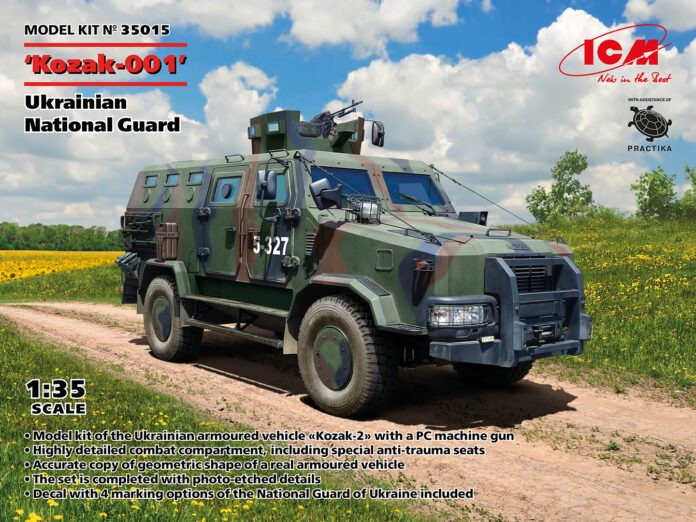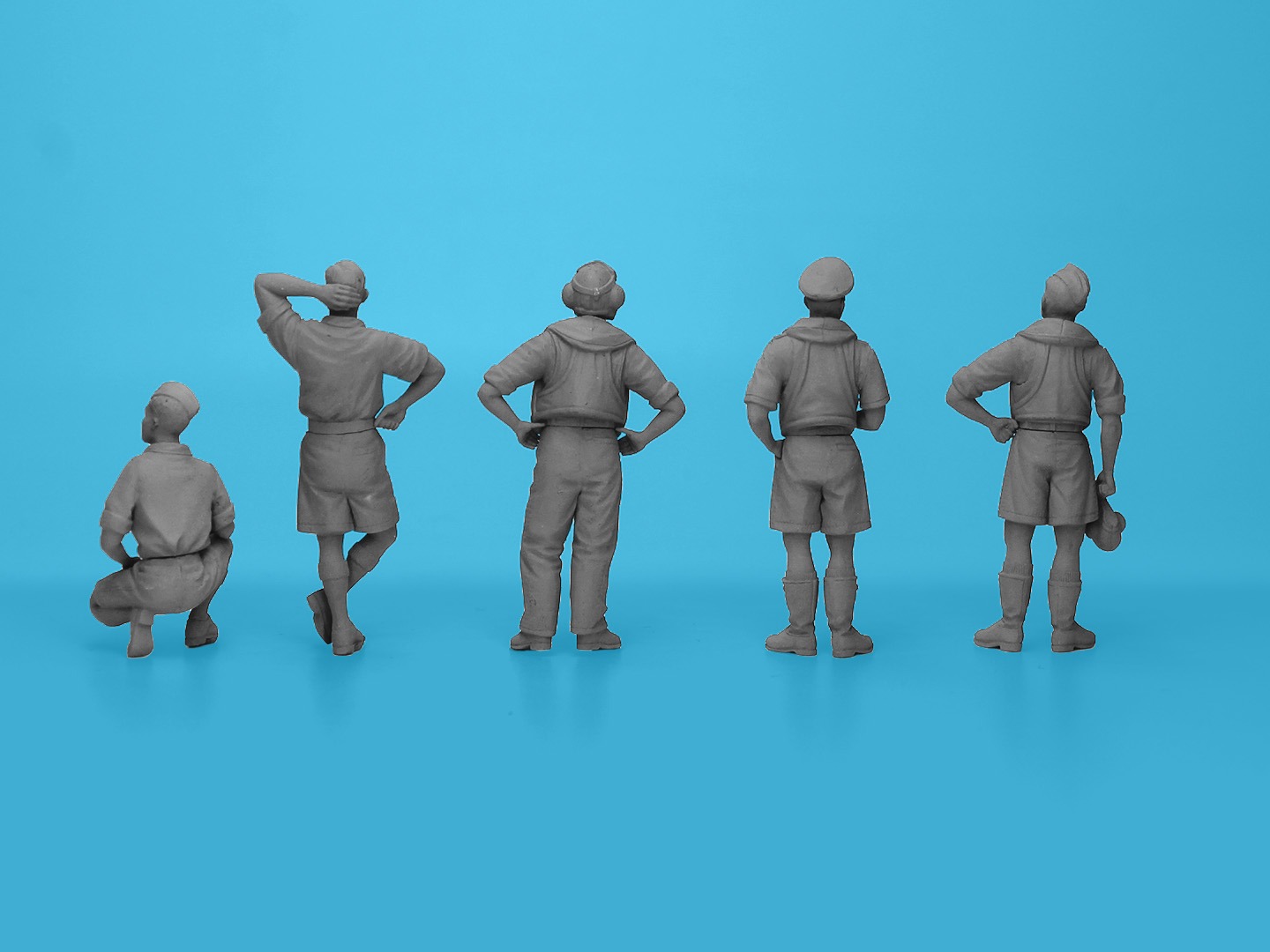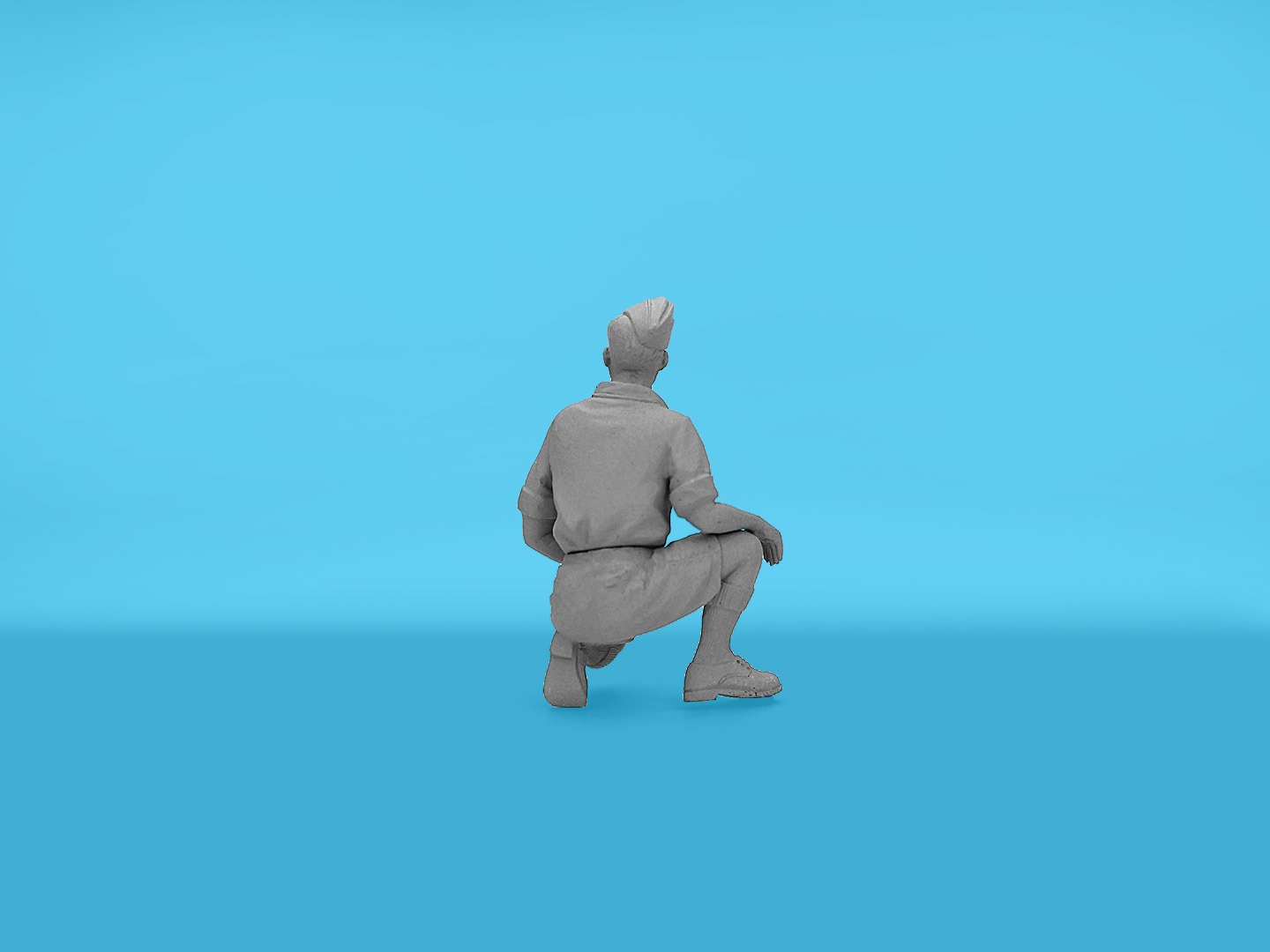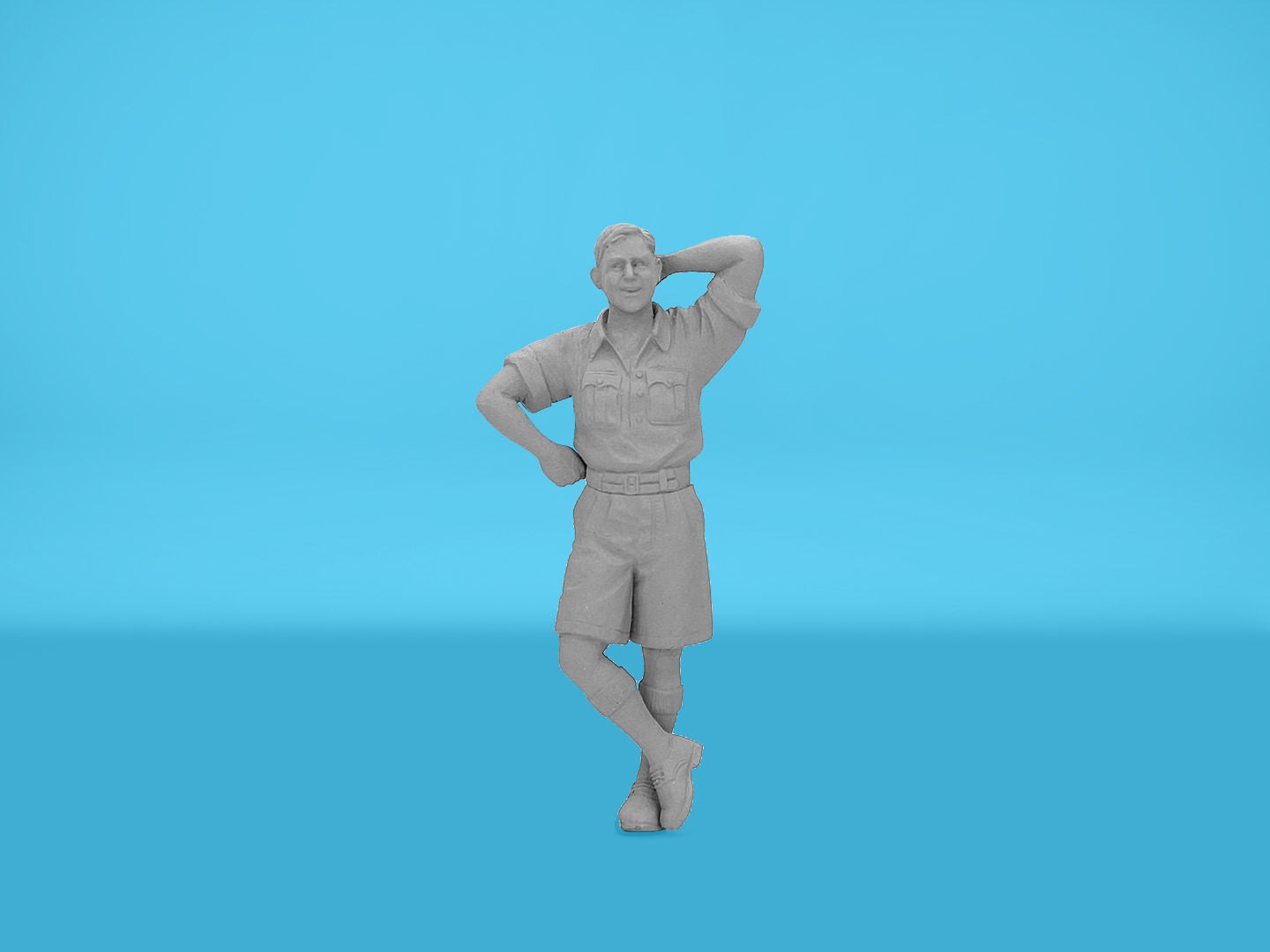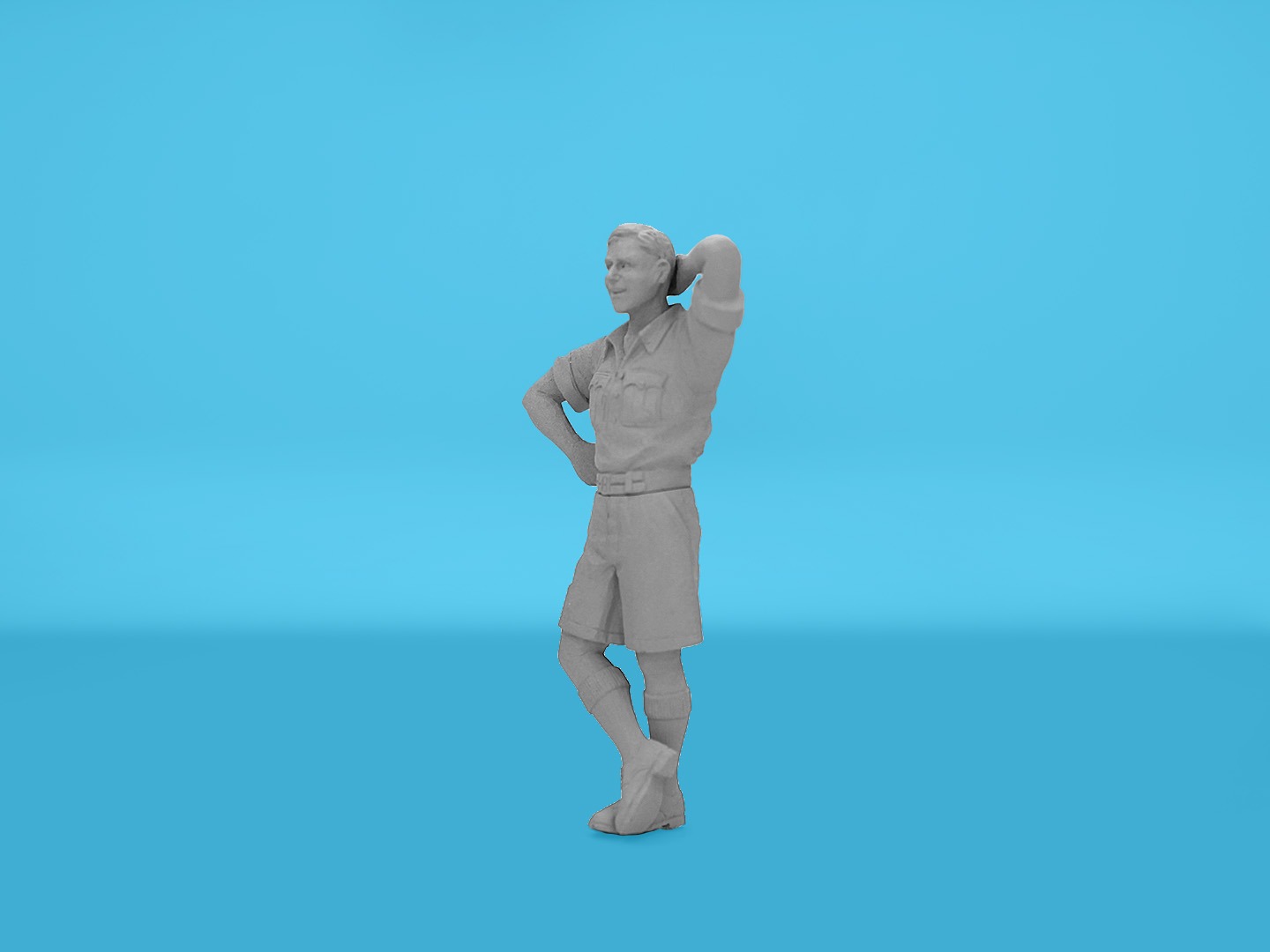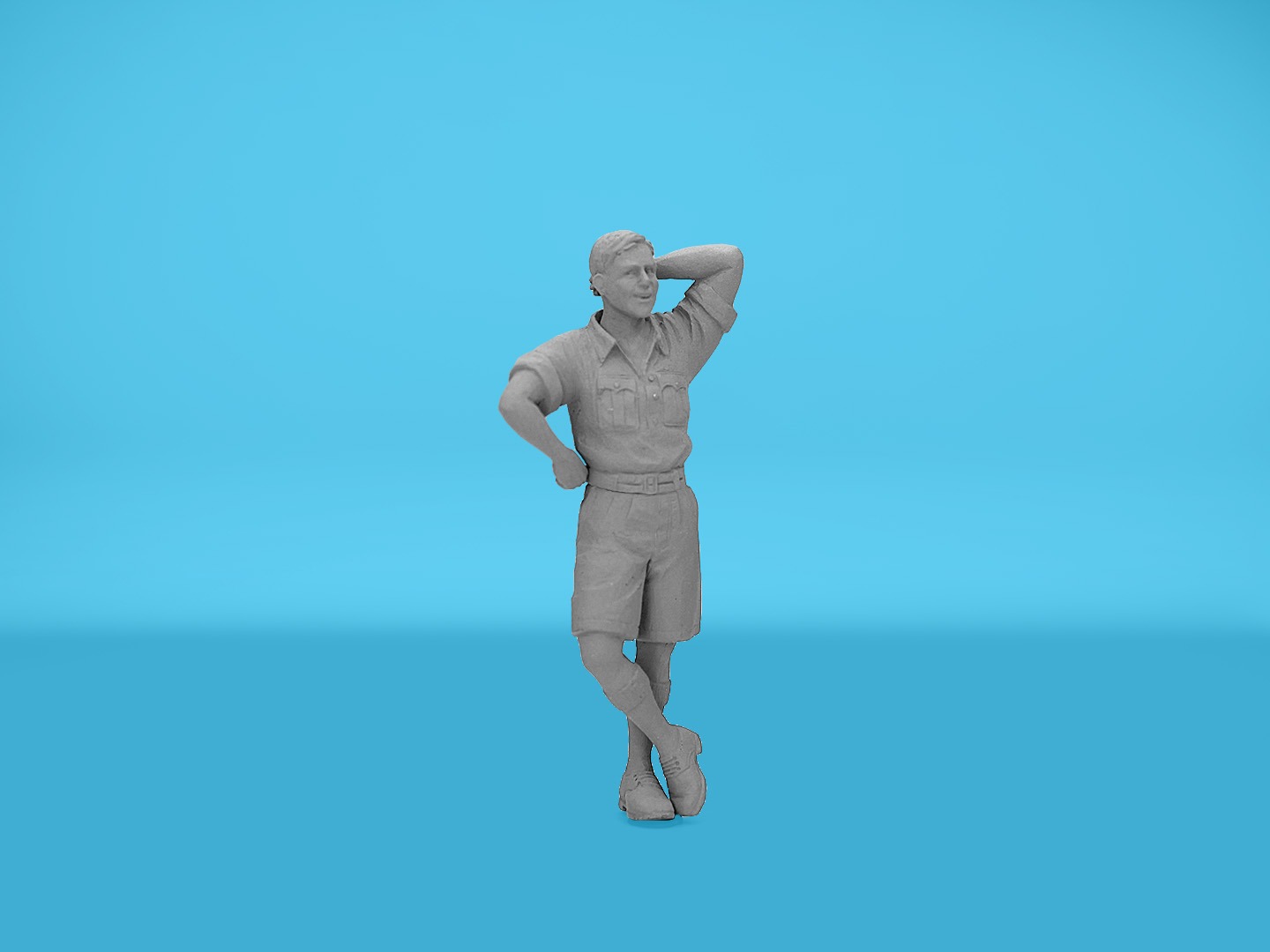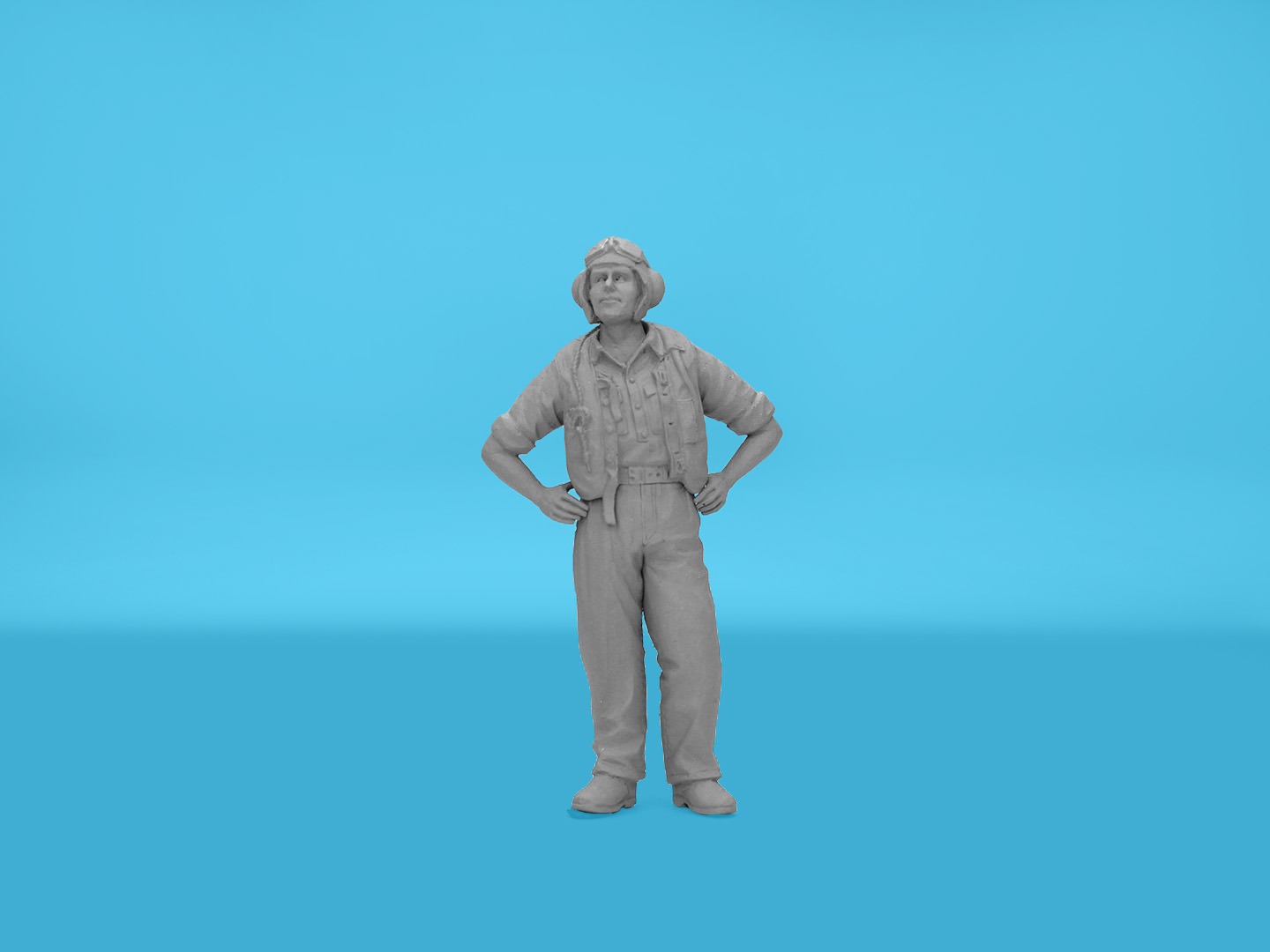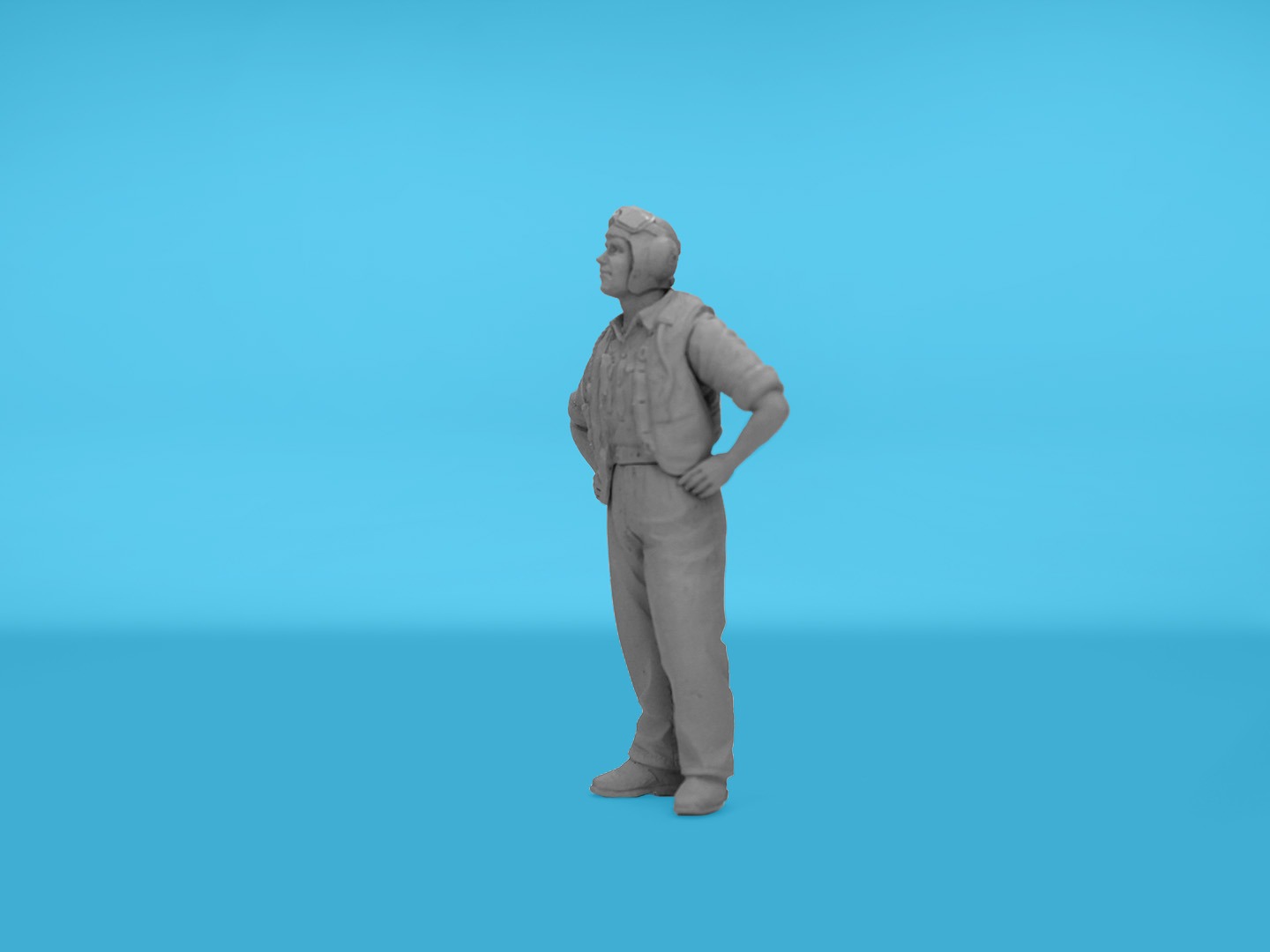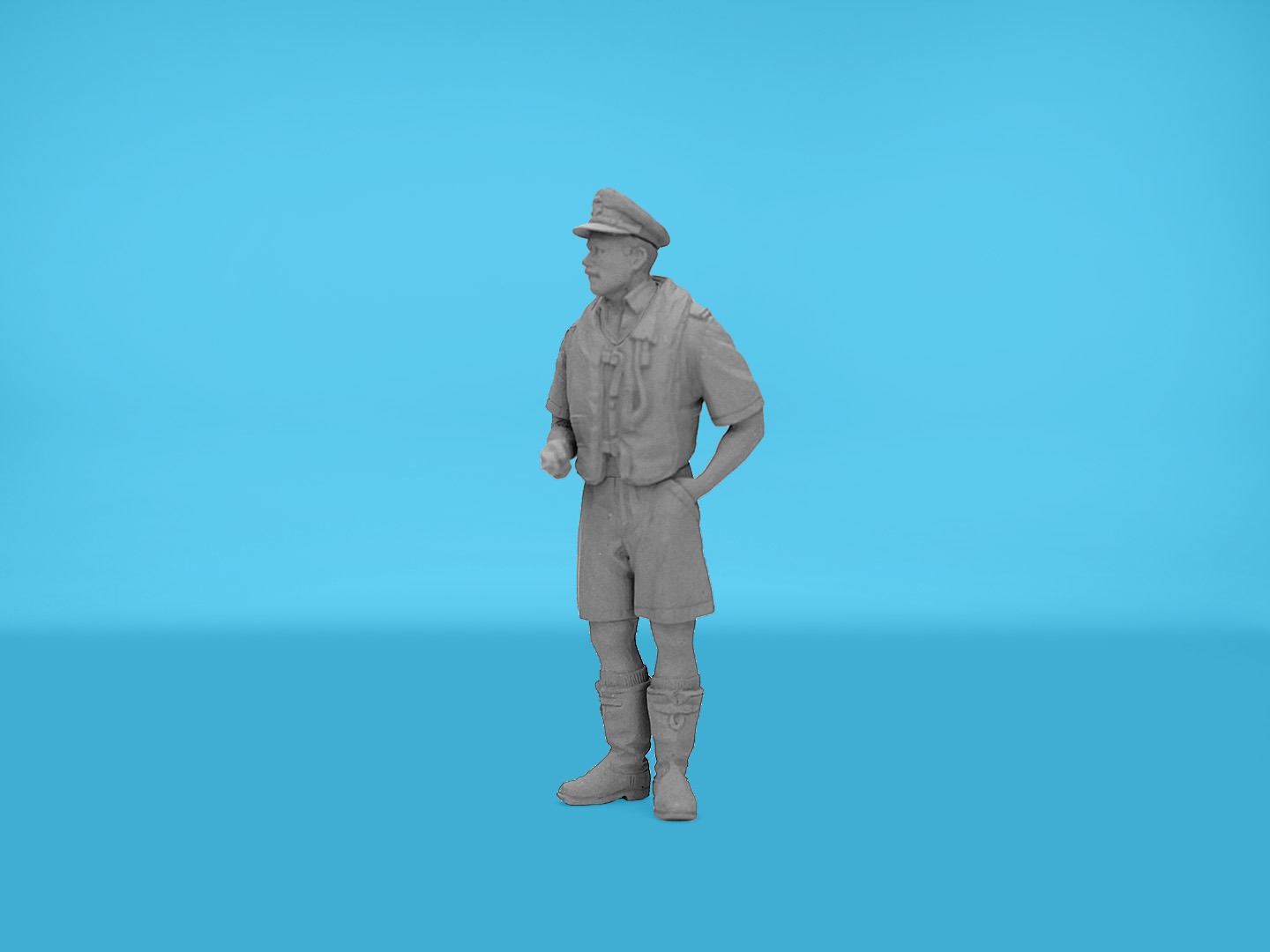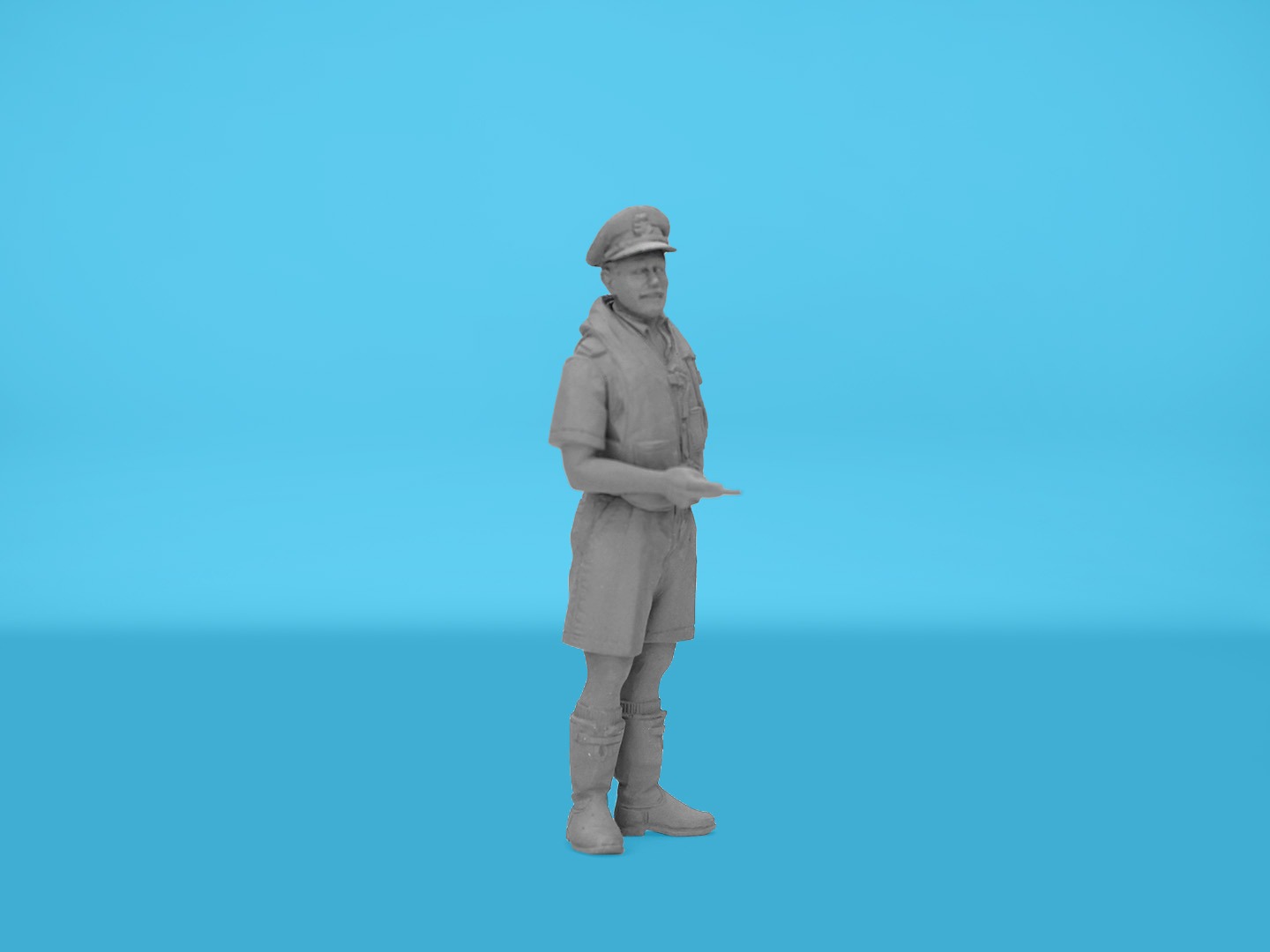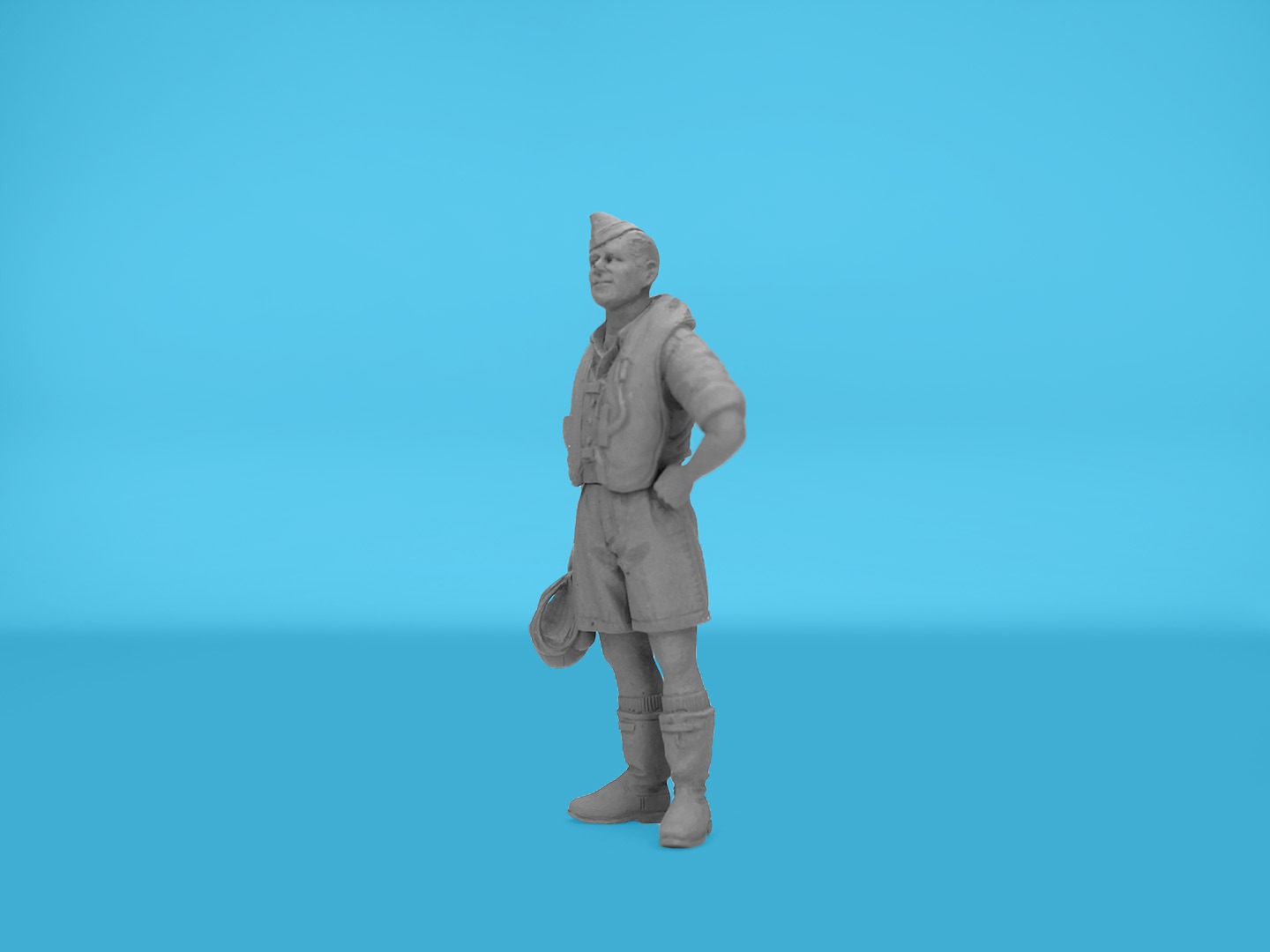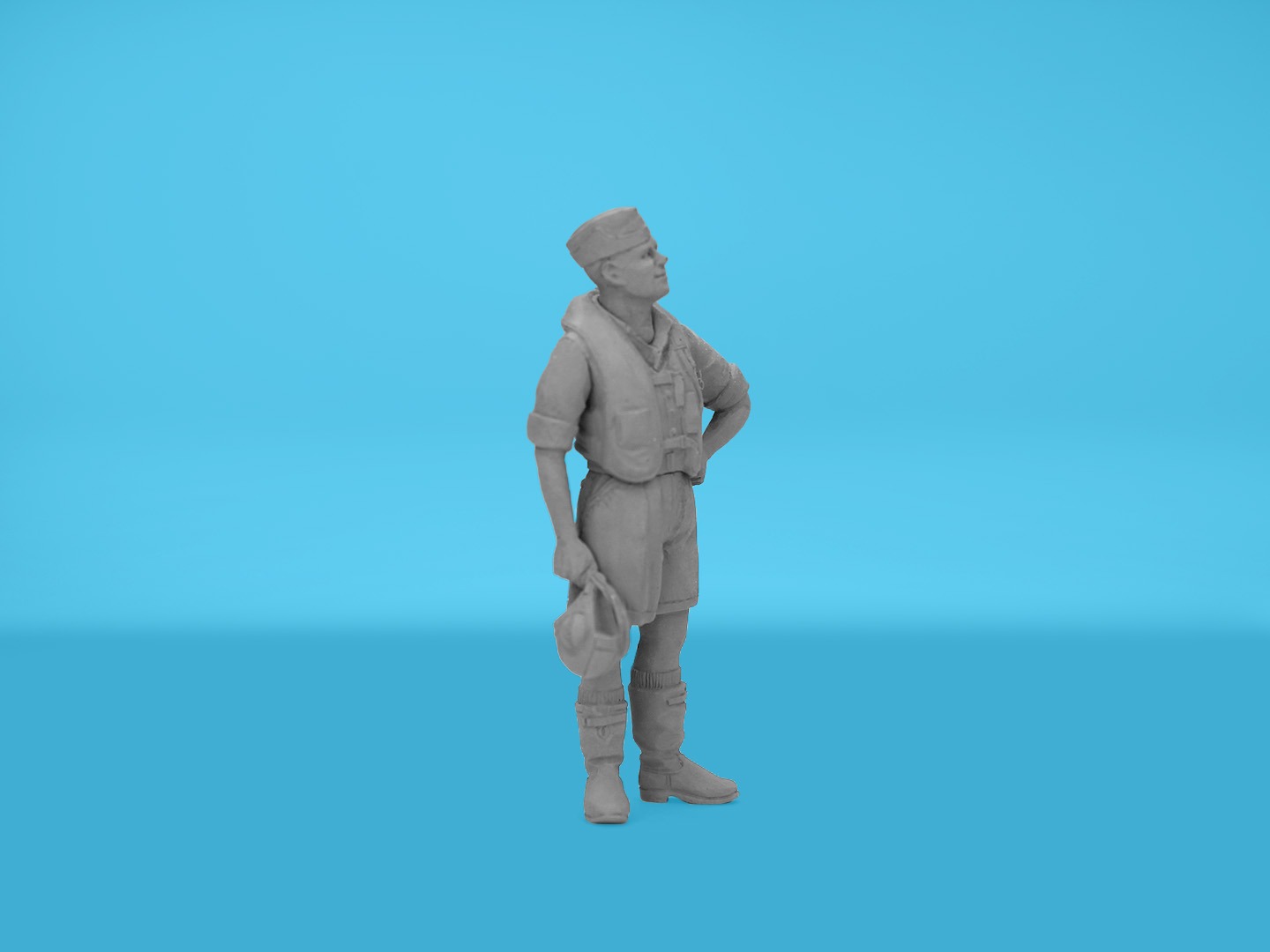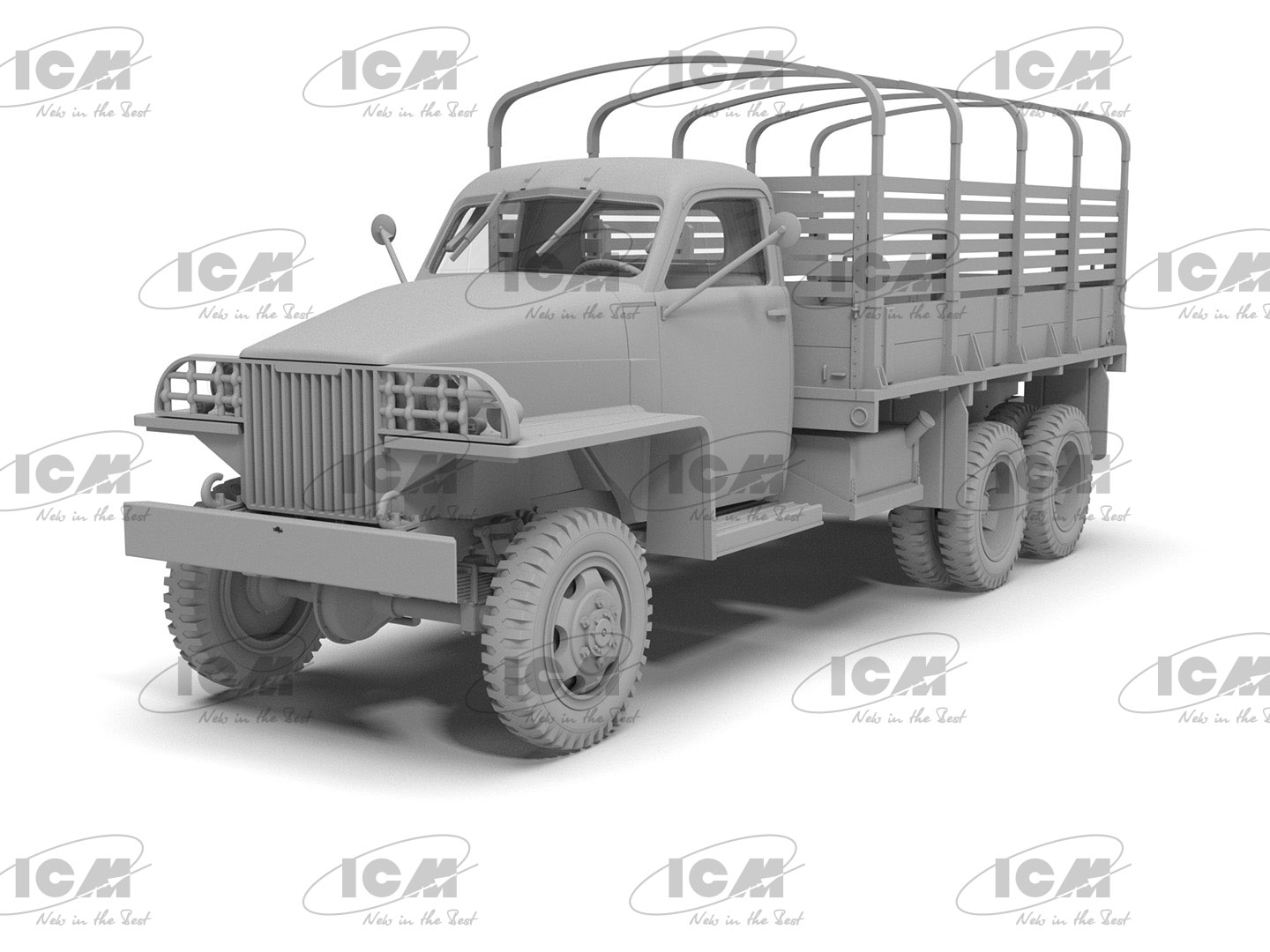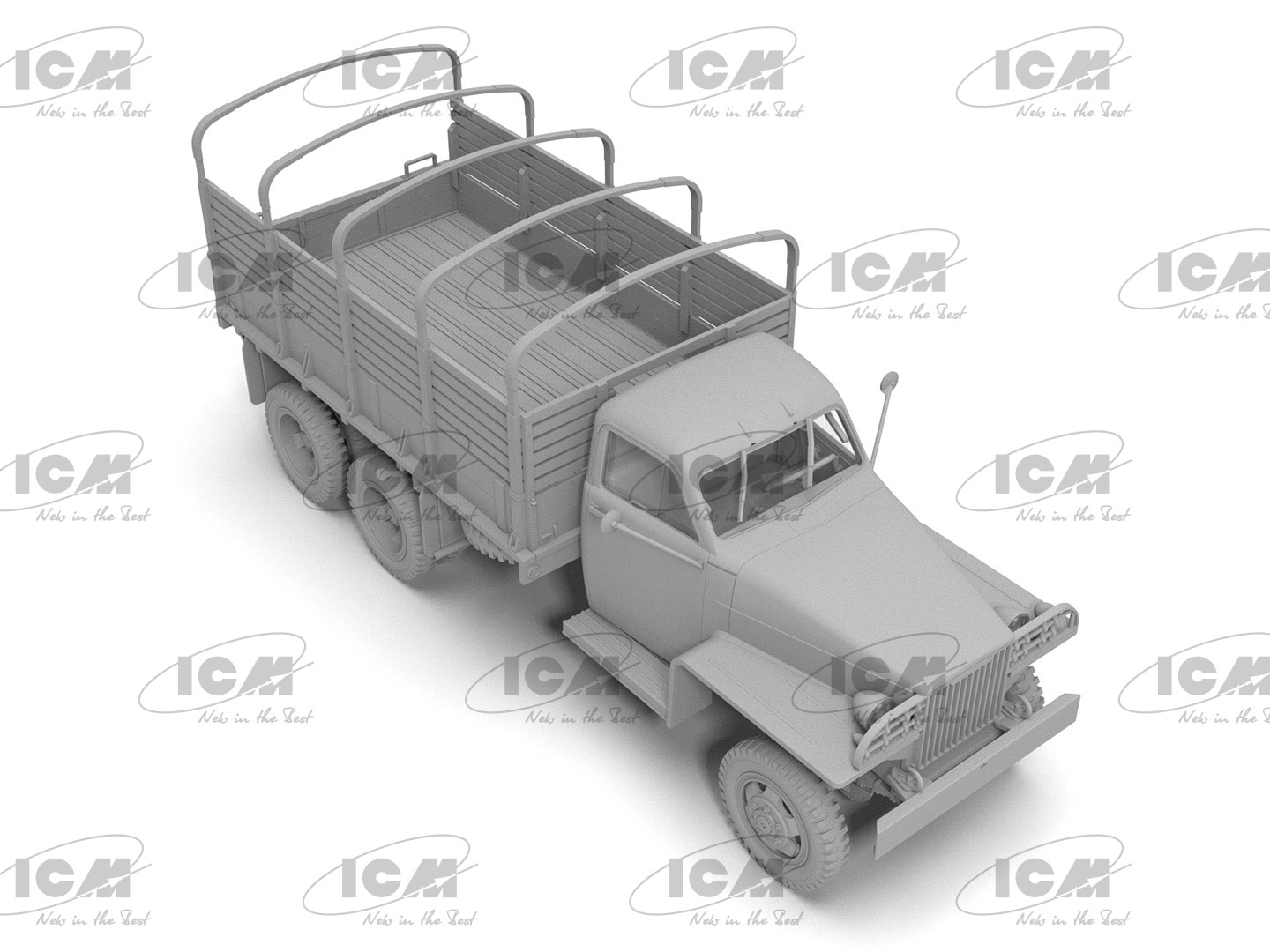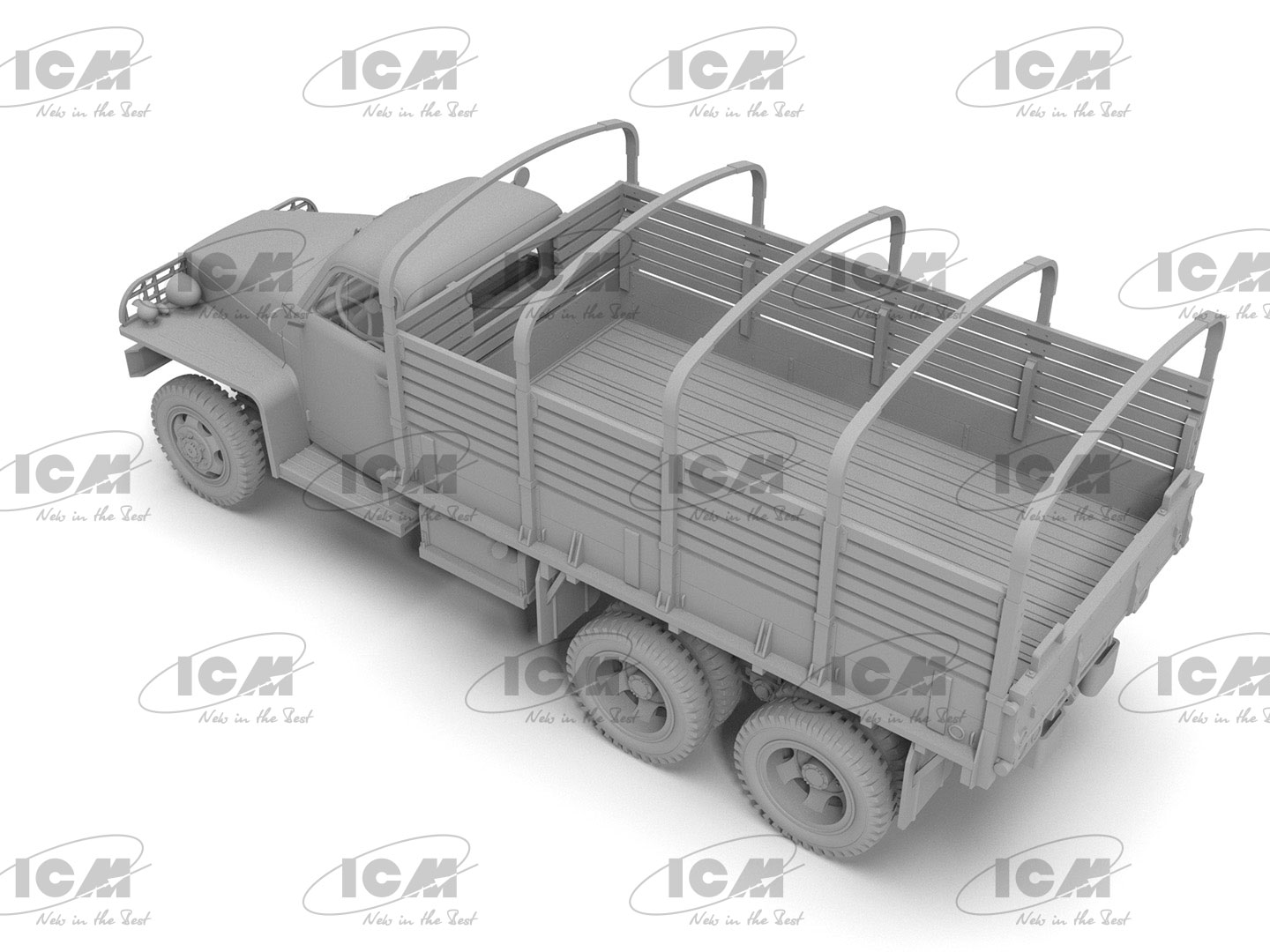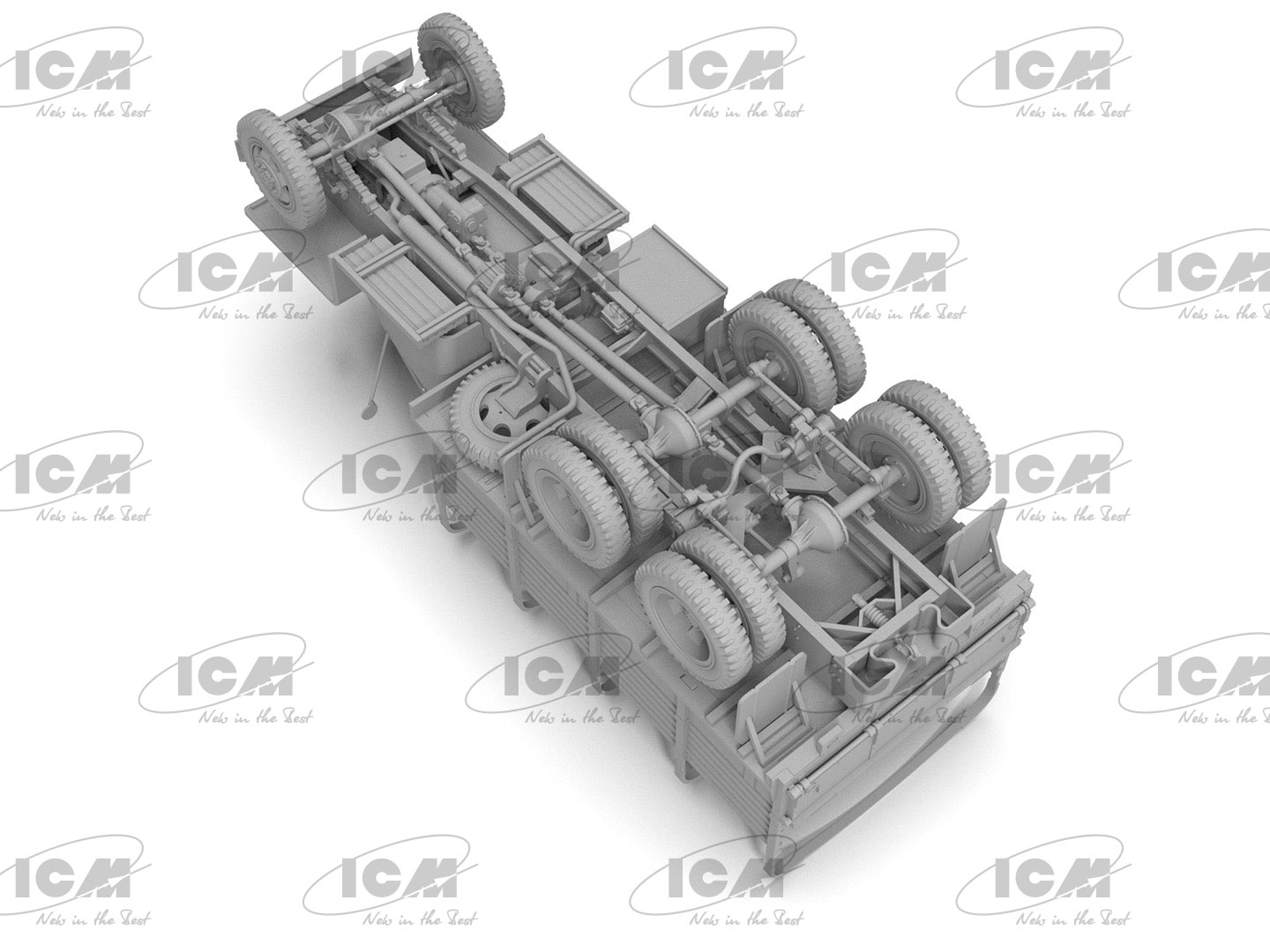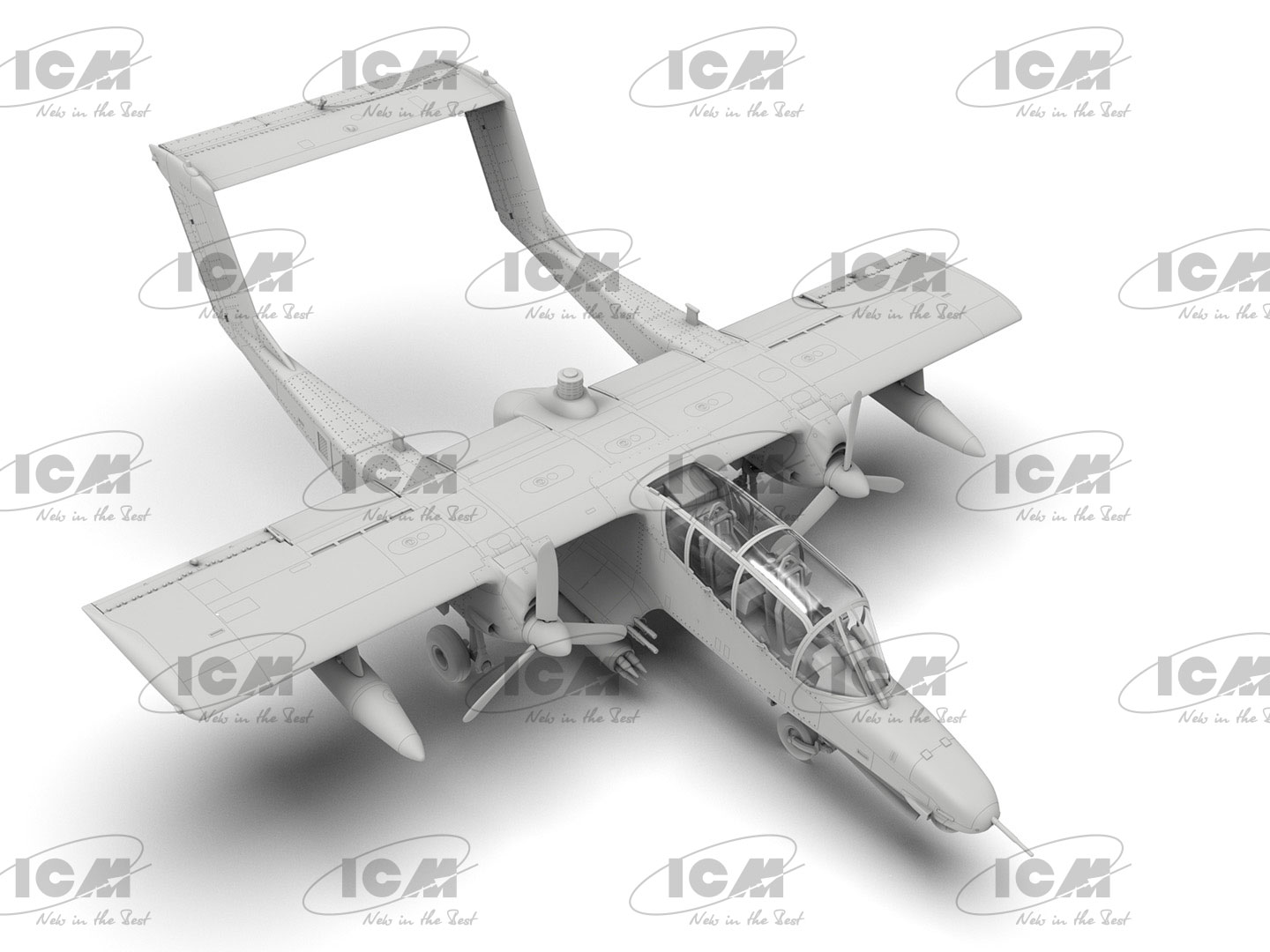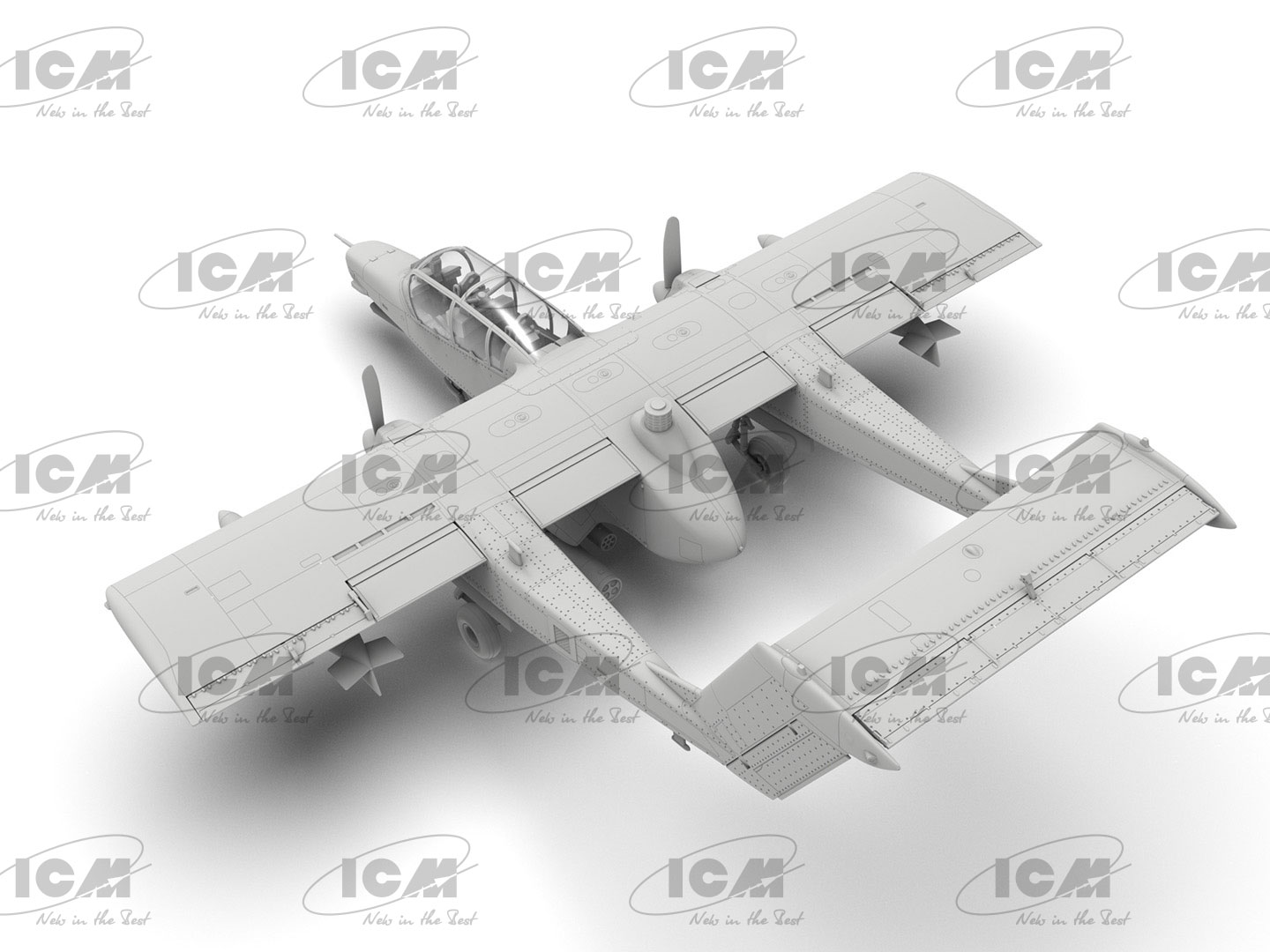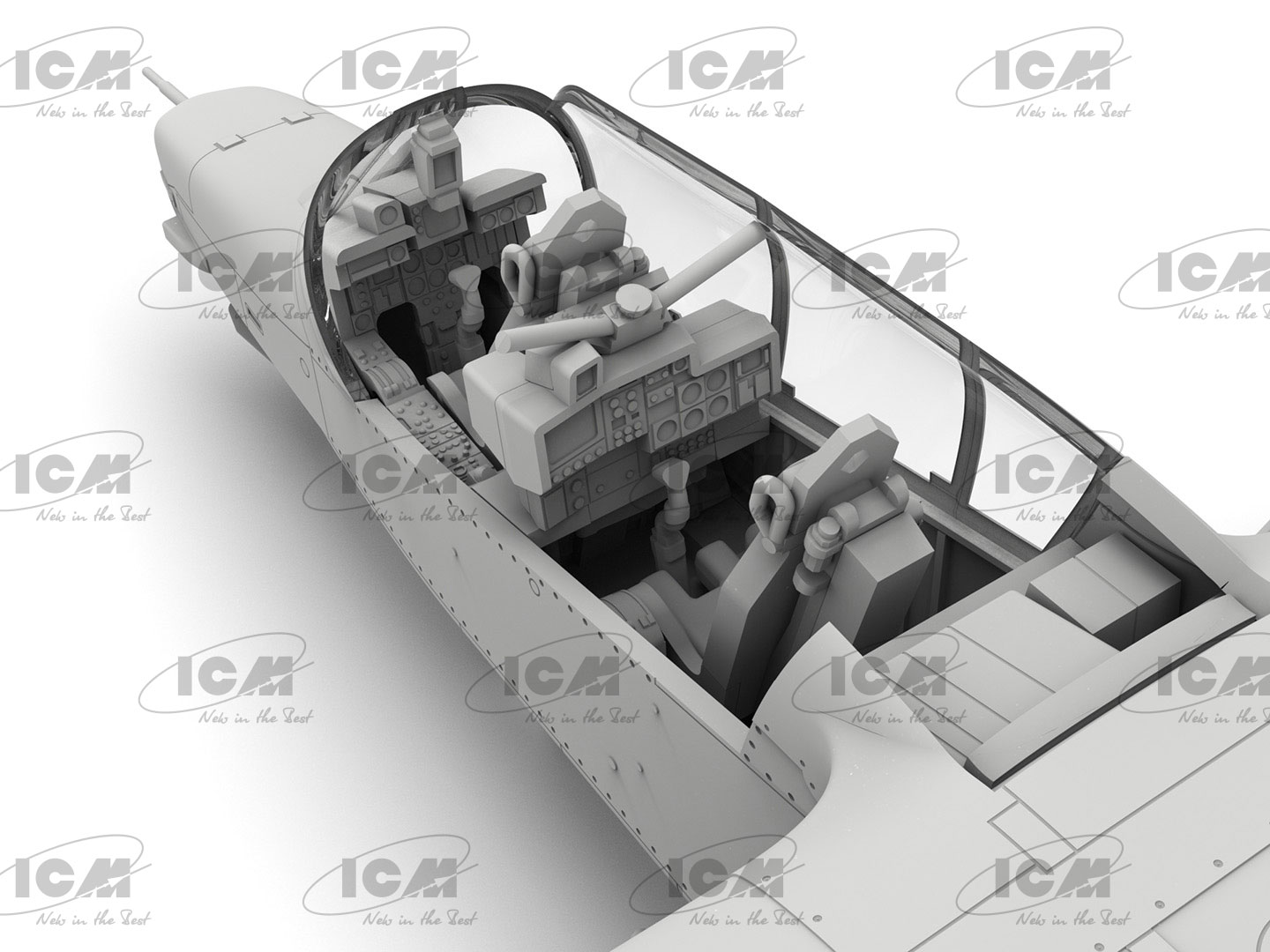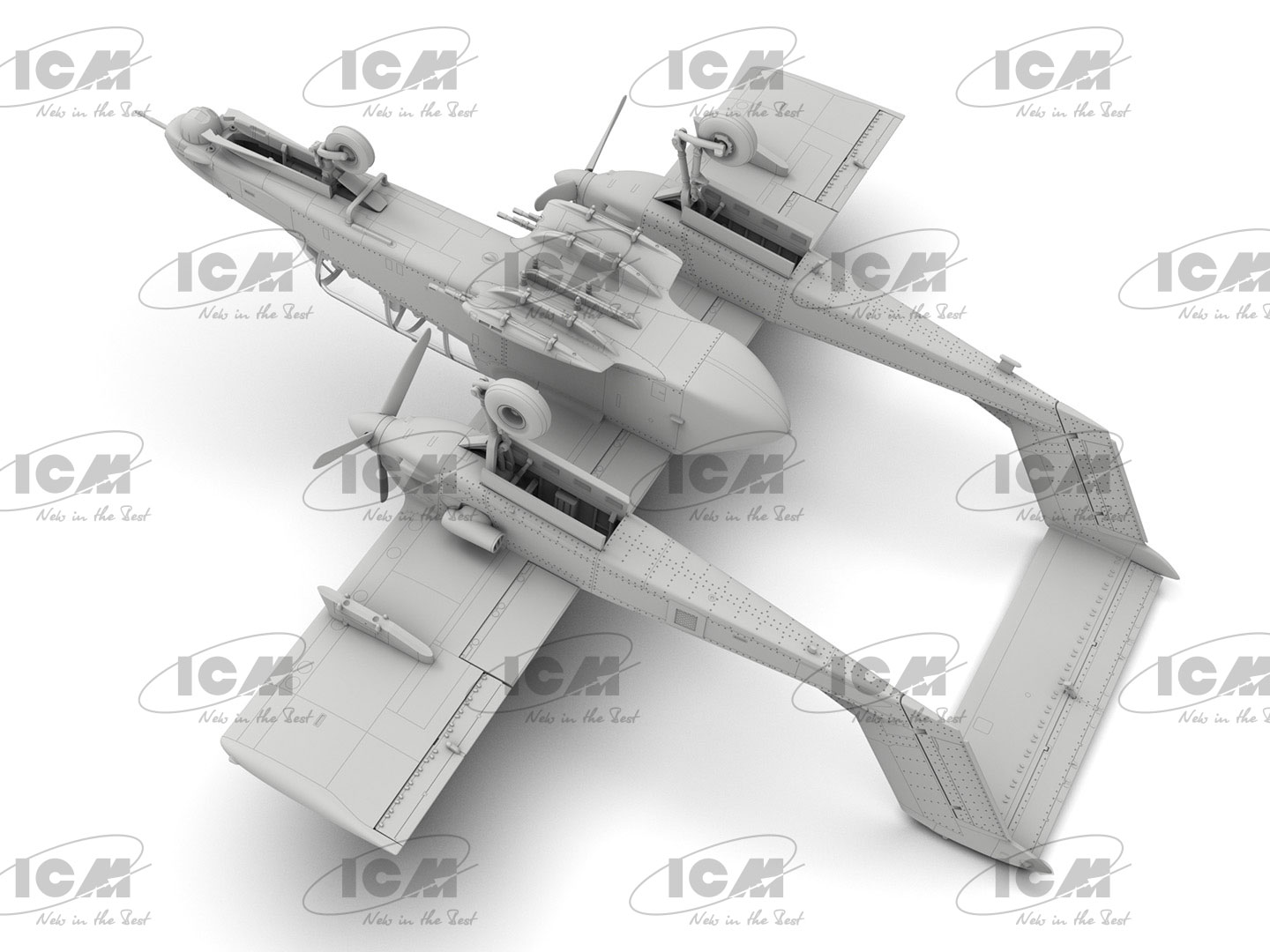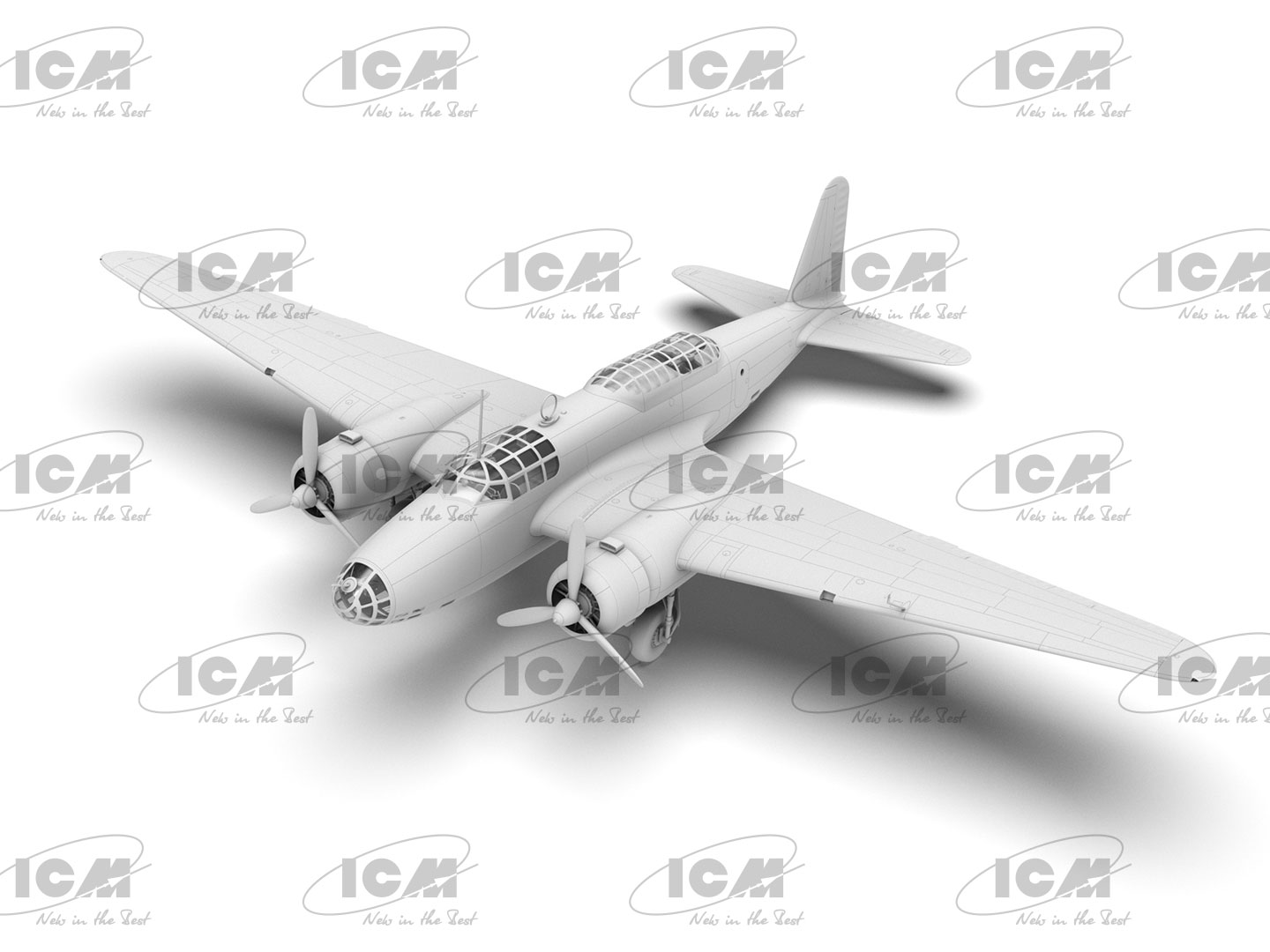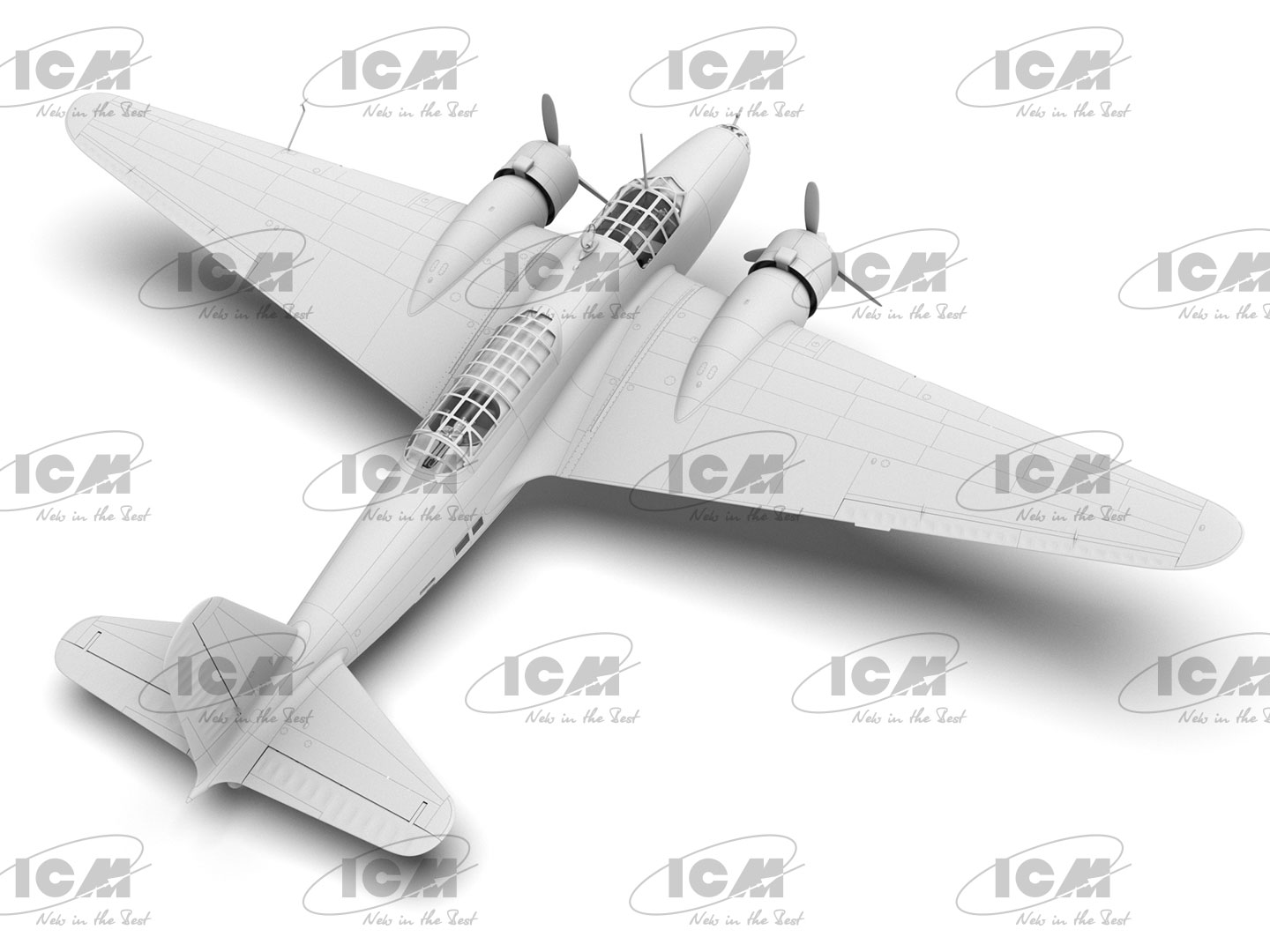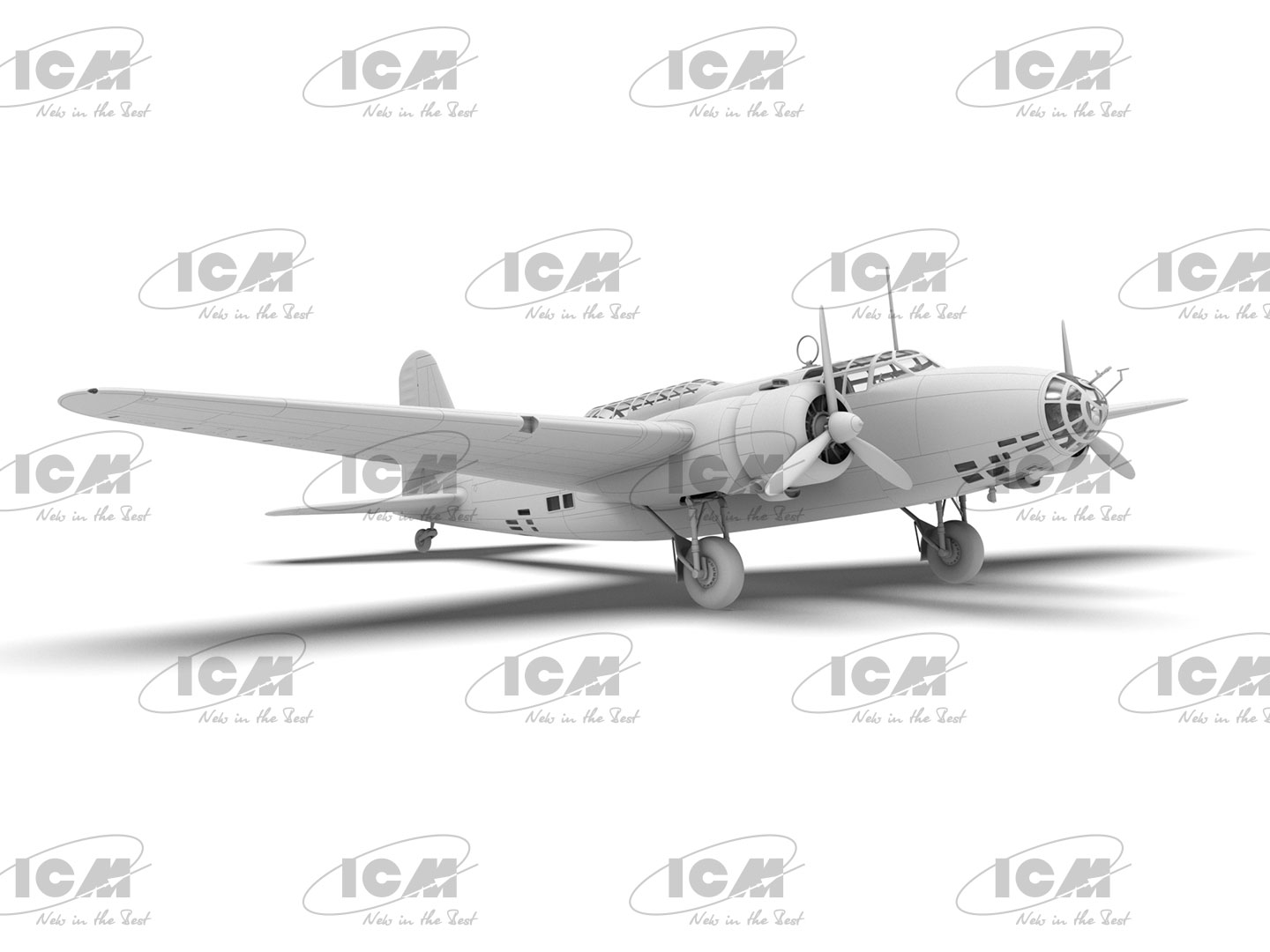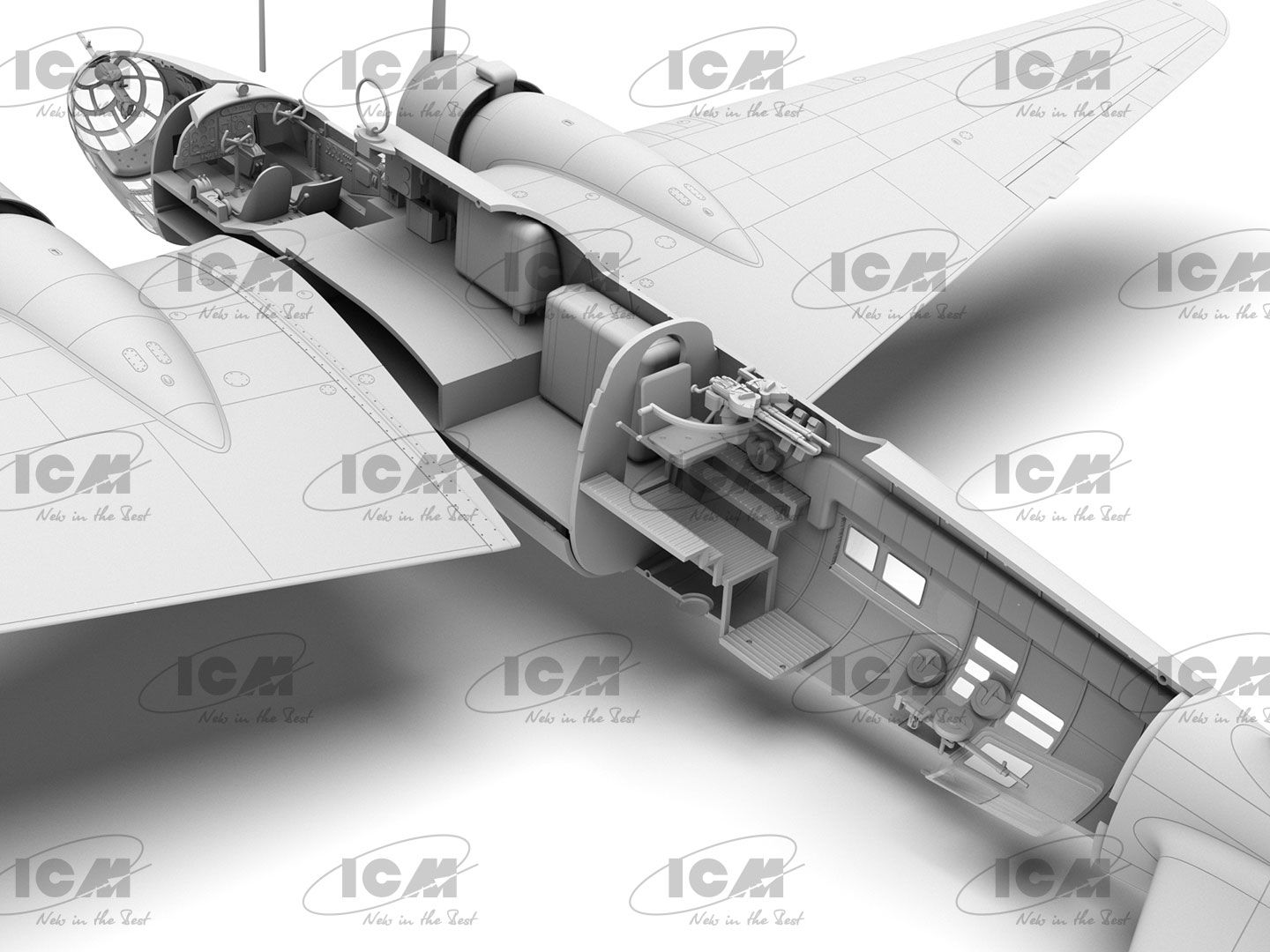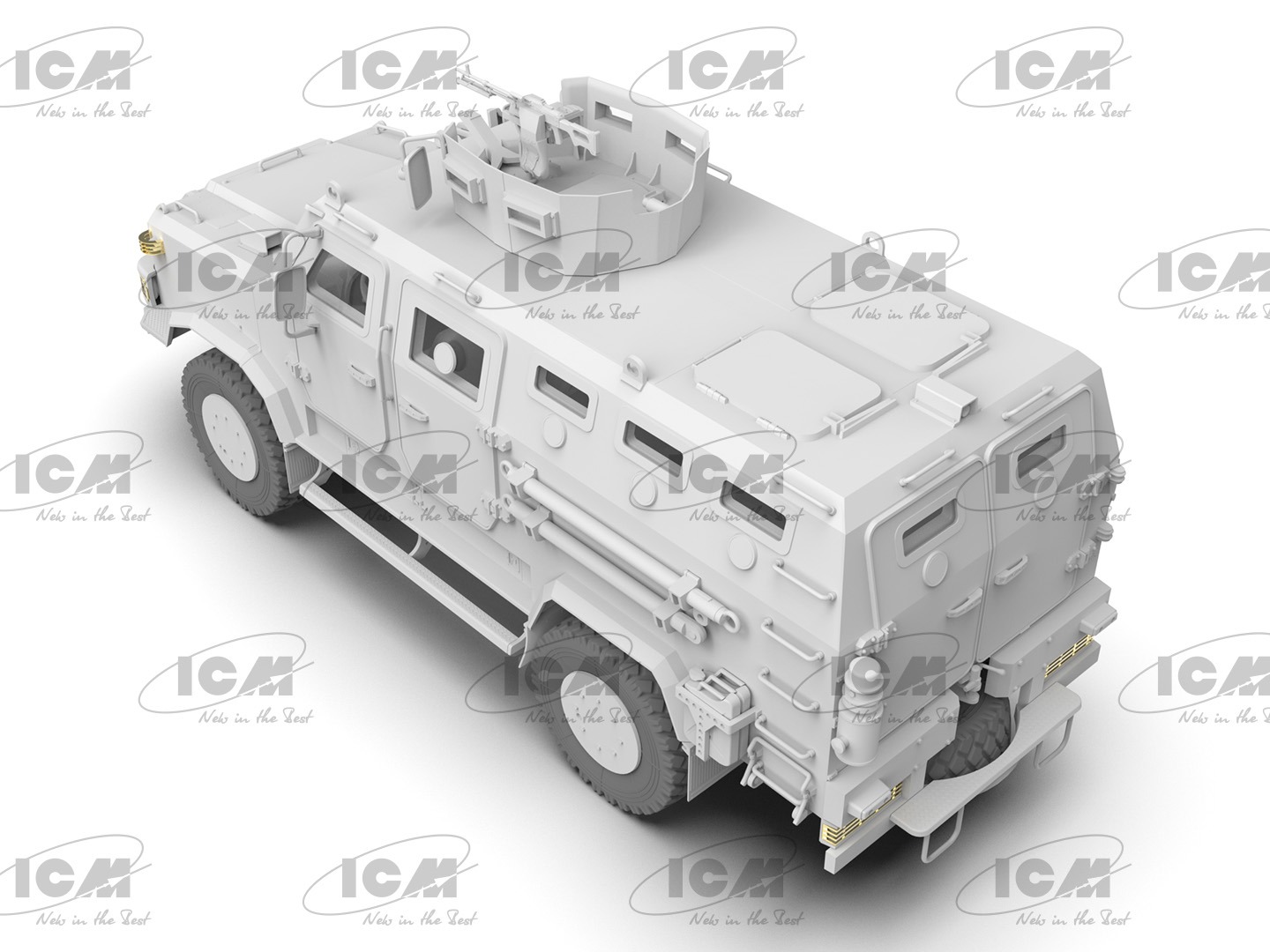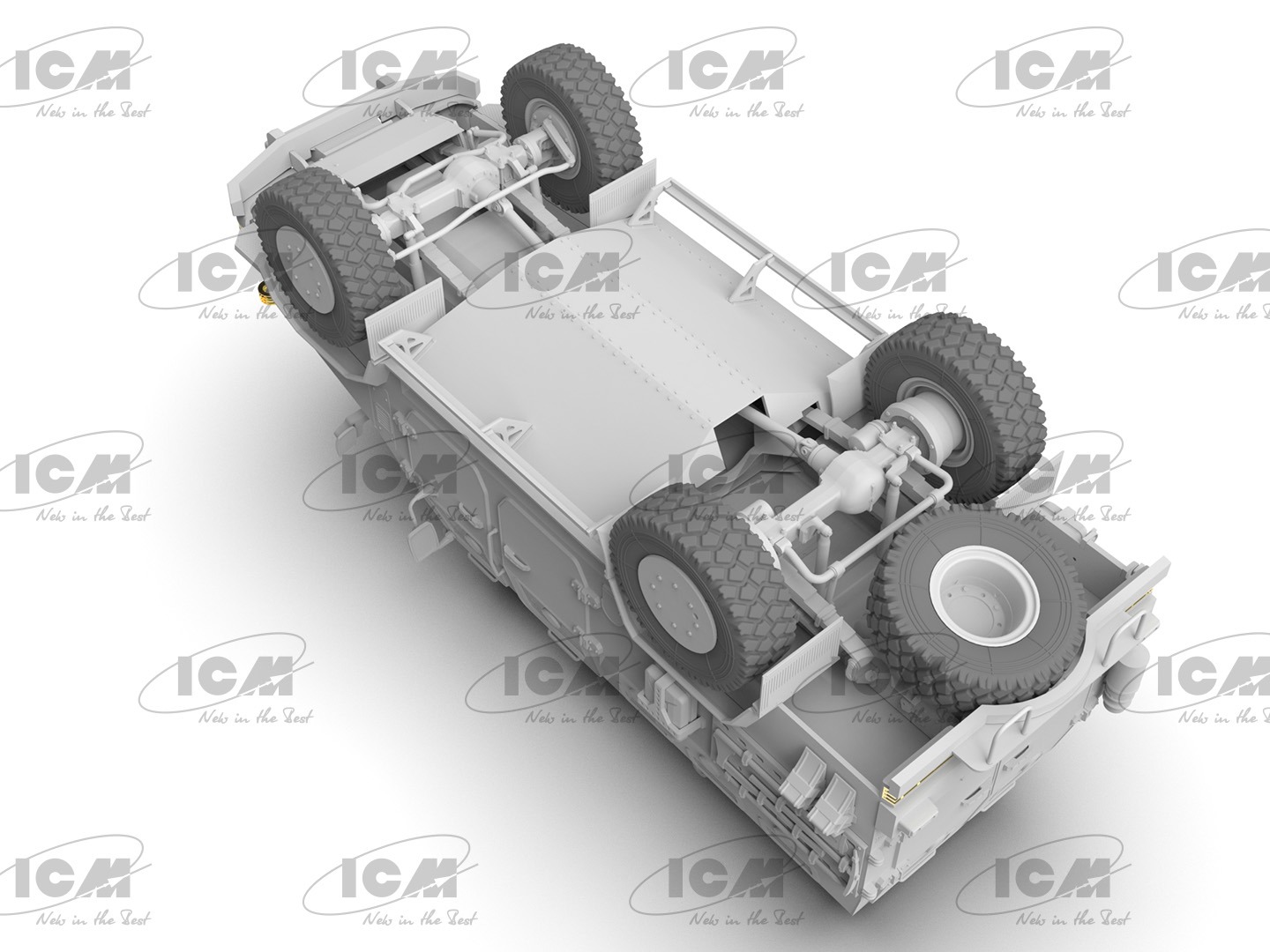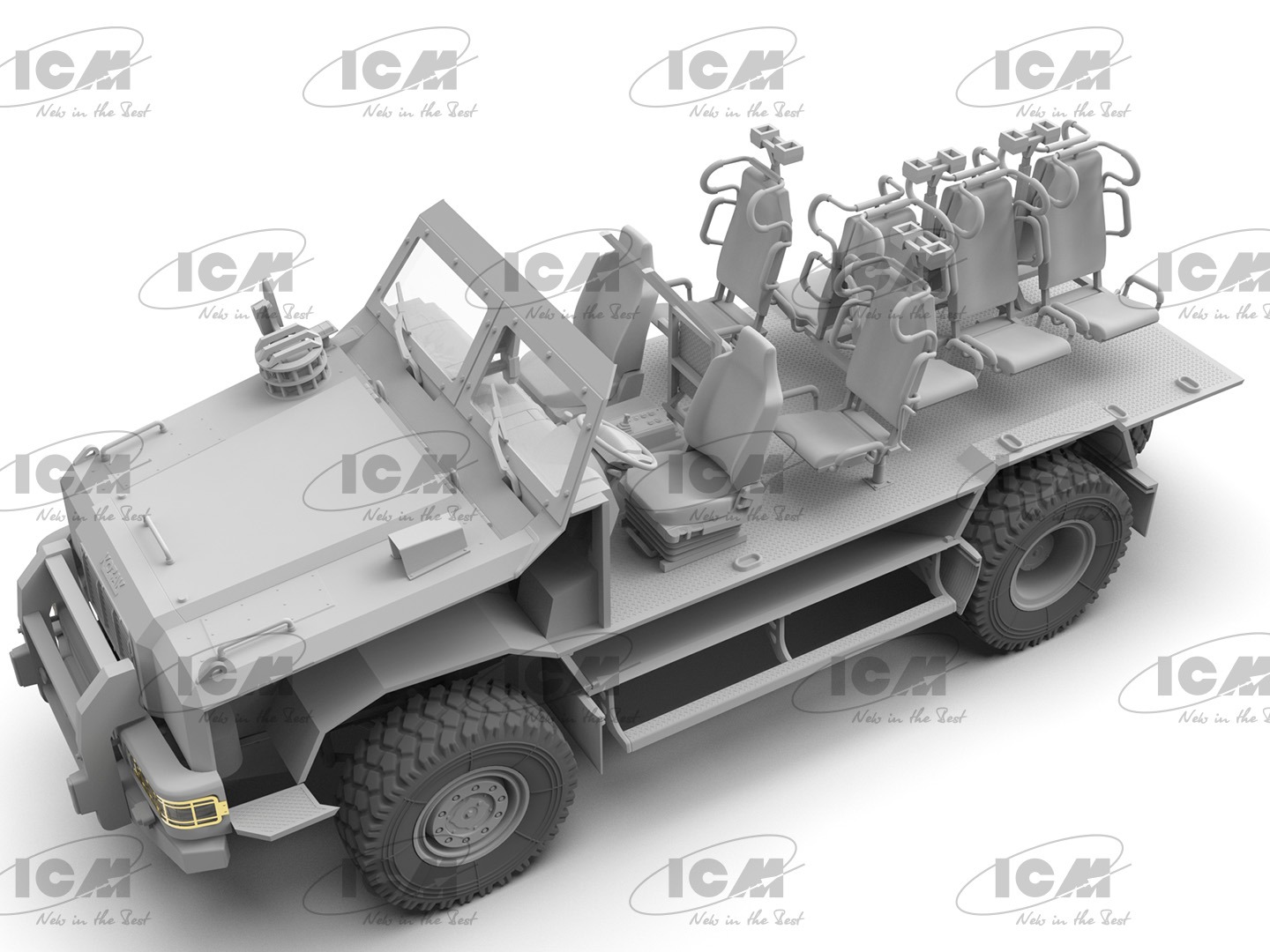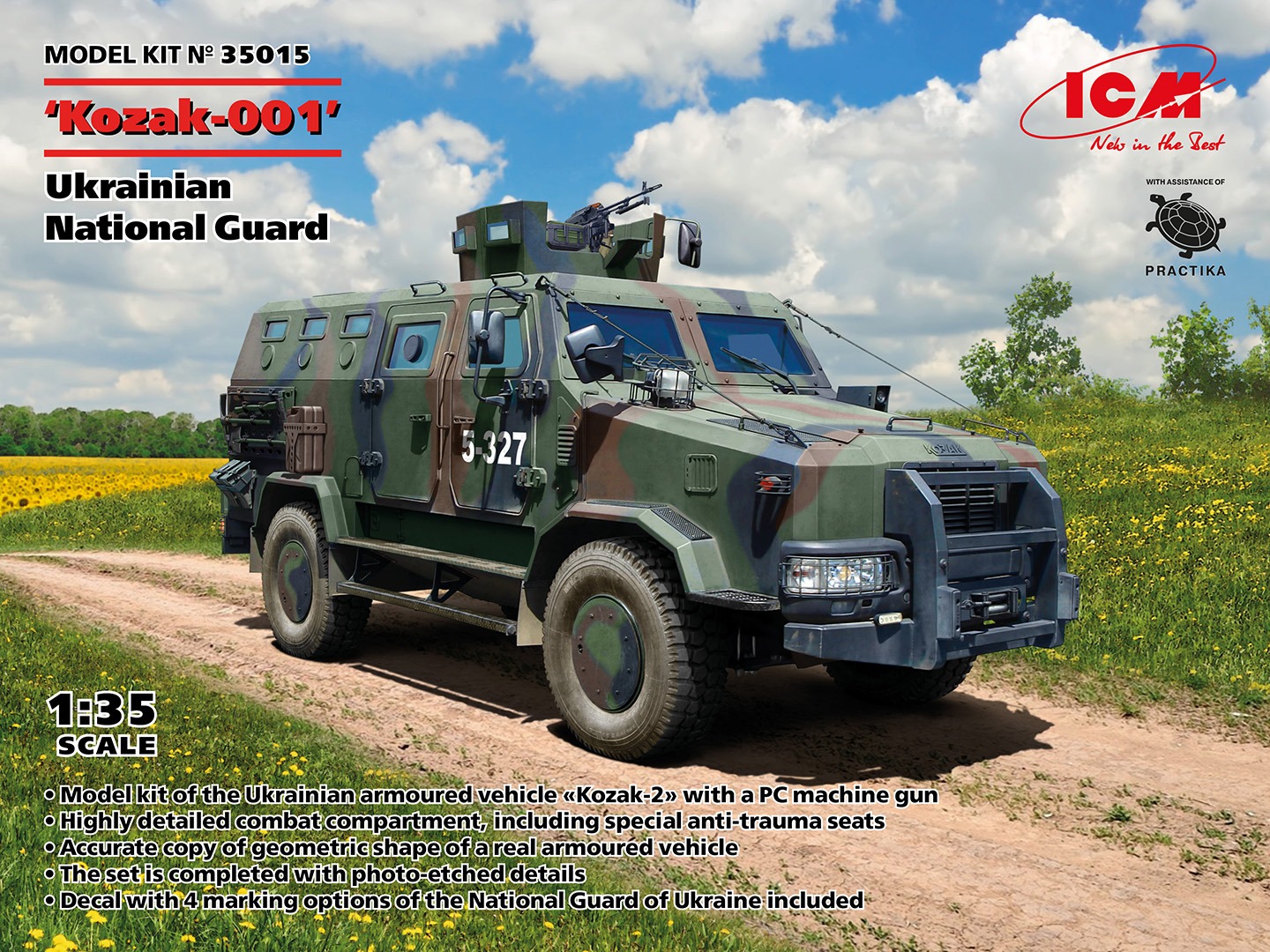 1/35 ‘Kozak-001’
1/35 ‘Kozak-001’
Ukrainian National Guard
The Kozak-2 armoured vehicle was developed by the Ukrainian Research and Production company ‘Practika’. It belongs to the MRAP class of combat vehicles designed to protect the crew from mine explosions and ambushes, and its armour protection meets the second level of the STANAG 4569 standard. The armoured vehicle is built on the chassis of a four-wheel drive truck adapted to off-road conditions. The tasks that the armoured vehicle can perform include patrolling, supporting vehicles, communications and fire support for personnel in combat. The crew and troops are equipped with anti-trauma seats with five-point safety belts. The vehicle can be armed with a heavy machine gun or a 7.62 mm machine gun, both of which are mounted in an armoured turret with circular rotation. “The Kozak-2 is in service with the Ukrainian Armed Forces and has been used by various units of the National Guard of Ukraine for several years.
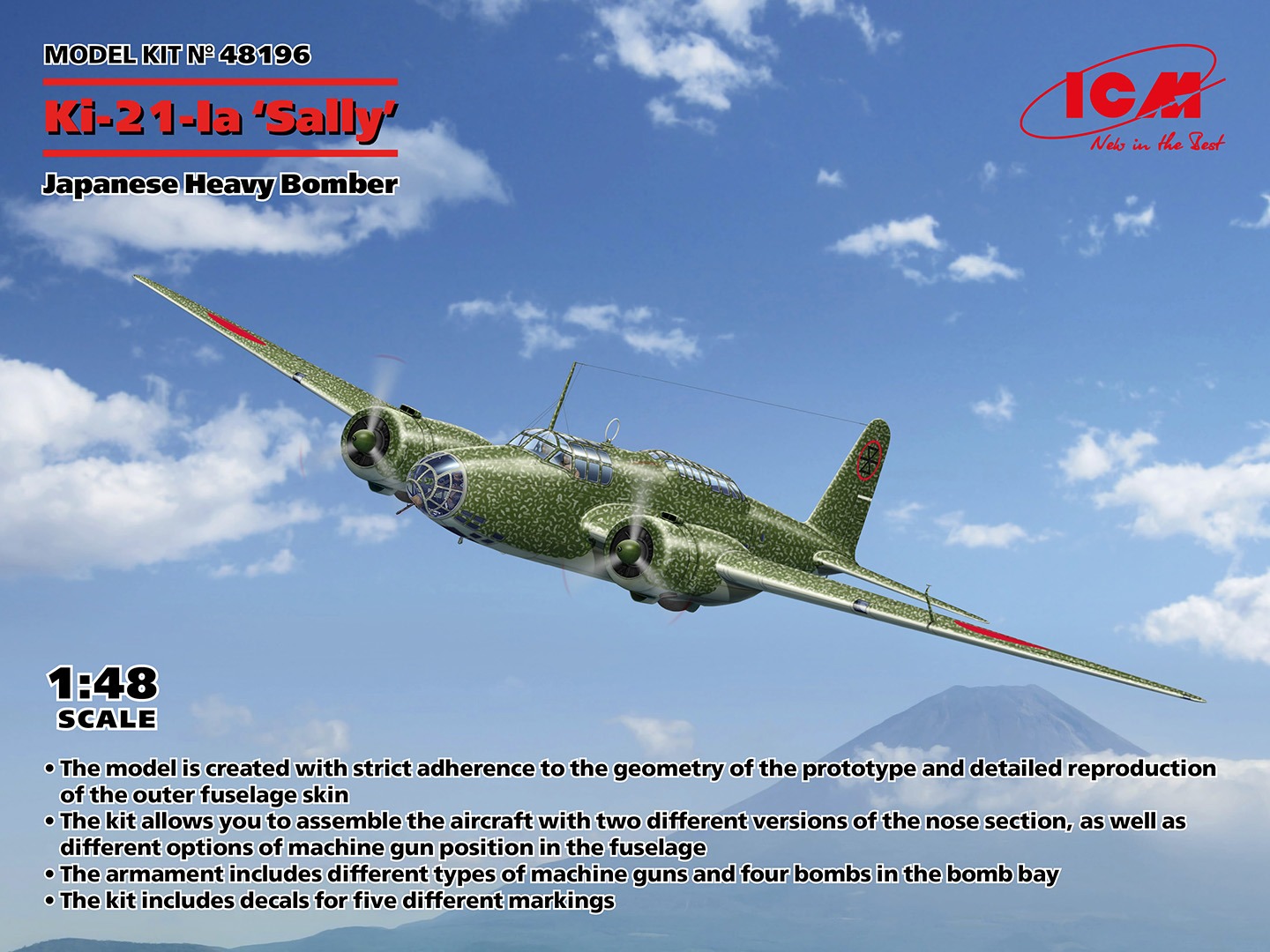 1/48 Ki-21-Ia ‘Sally’
1/48 Ki-21-Ia ‘Sally’
Japanese Heavy Bomber
The Ki-21 pre-production bomber made its first flight in late 1936. Serial production of its first modification, the Ki-21-Ia, began in 1938, the same year the aircraft made its combat debut. Air units of the Imperial Japanese Army, which were equipped with the Ki-21-Ia, were involved in active combat operations in China. In the spring of 1939, the Ki-21-Ia took part in combat operations against the Red Army on the Halhin Gol River. The aircraft’s combat payload of 1,000 kg was a good indicator of its time and allowed for massive bombing strikes, and the defensive tactics developed by the pilots of these bombers in air battles resulted in their fairly low losses compared to other types of aircraft. After more advanced models were produced, the first modification bombers were transferred to training units, although a certain number of Ki-21-Ia continued to be operated by combat units. American pilots, who gave Japanese aircraft their own names, referred to Ki-21 bombers as ‘Sally’.
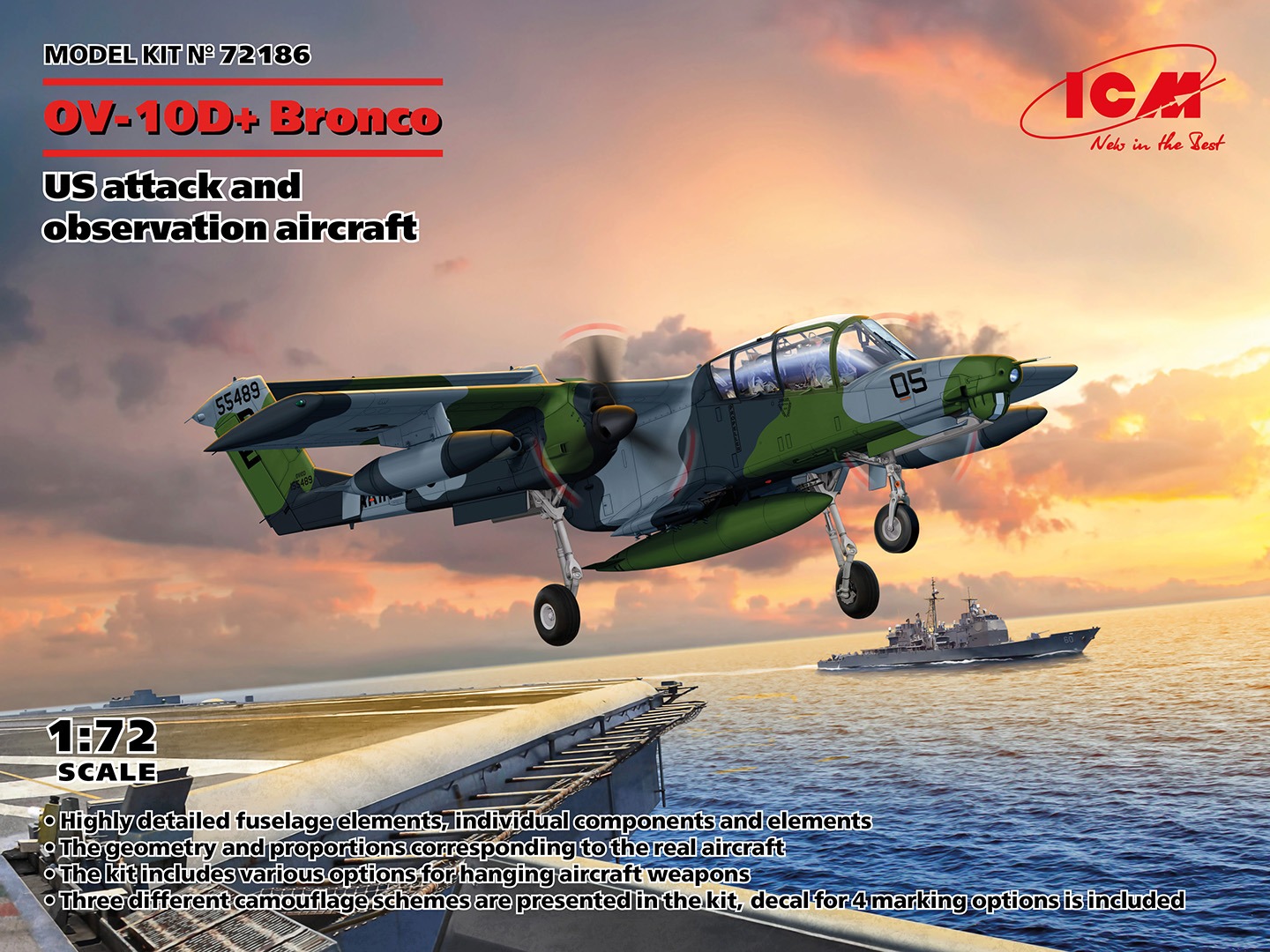 1/72 OV-10D+ Bronco
1/72 OV-10D+ Bronco
US attack and observation aircraft
The OV-10D+ attack and observation aircraft is a version of the OV-10A Bronco. The modification was carried out at the Naval Aviation Refurbishment Centre (NARF). The changes affected the engine, avionics, communications systems, airframe and cockpit equipment. One of the features of this modification was the installation of a new FLIR infrared system under the extended nose section, which also housed laser target designators. The tail beams were fitted with devices to protect against surface-to-air missiles. The advanced capabilities of the aircraft made it possible to perform a wide range of tasks, including ground target surveillance and guidance of attack aircraft, both during the day and at night. At the same time, the aircraft retained the function of an attack aircraft and could strike ground targets if necessary. OV-IOD+ aircraft were used by the US Marine Corps in Operation DESERT STORM in 1991.
 1/35 Studebaker US6-U3
1/35 Studebaker US6-U3
US military truck
The Studebaker US6 three-axle truck was launched by the Studebaker Corporation in 1941, and in 1943, REO Motor Car also joined the production. In total, about 200,000 vehicles of thirteen modifications were produced. The car had a robust design and a large payload. Its 94 hp Hercules JXD 6-cylinder engine provided the Studebaker US6 with high off-road performance. Most of these trucks were used by US allies, but a certain number were also used by the US armed forces. For example, Studebaker US6s were used by the US Army Corps of Engineers, in particular, during the construction of the Alaska Highway. A small number of these trucks were used by the US Army in Europe, as part of the so-called reverse lend-lease, when a certain amount of equipment transferred to the allies was returned to the US for various reasons. There are also cases of Studebaker US6 being used by the US armed forces in the Far East.
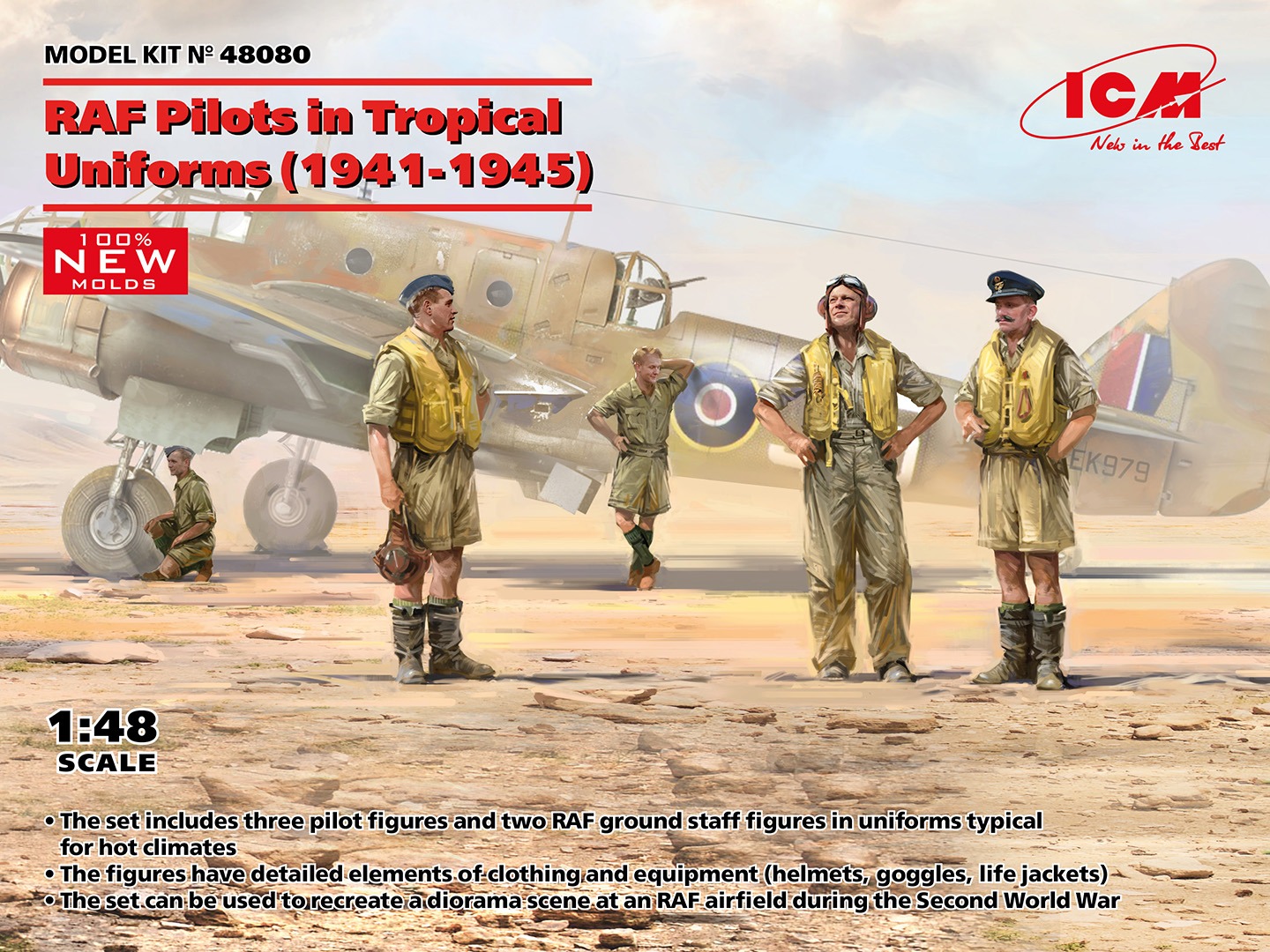 1/48 RAF Pilots in Tropical Uniforms
1/48 RAF Pilots in Tropical Uniforms
(1941-1945)
On the eve of the Second World War, the Royal Air Force was organizationally divided into Nome Command and Overseas Command. The Overseas Command, in turn, included the Air Forces of the Middle East, Palestine, Transjordan, Iraq, Aden, the Mediterranean, India, the Far East, as well as wings in Egypt and Sudan. The hot climate zones required a uniform adapted to the climate, which was light khaki in colour. Also, during combat operations in the desert, pilots and ground staff wore a combination of khaki and the traditional RAF grey and blue. Service in hot climates was difficult: heat, sandstorms, and problems with clean water made living conditions much more difficult. However, even in such difficult conditions, the British pilots performed their service selflessly. In heavy fighter battles in the air and dedicated torpedo attacks at sea, the RAF pilots proved their qualifications as resilient, disciplined and experienced fighters.
HobbyLink International
Hoblylink International Shop
eBay Store



